

2022 SABANG MANGROVE FOREST TOUR: PUERTO PRINCESA
by thepinay solobackpacker | May 24, 2022 | Palawan , Philippines , Puerto Princesa | 0 comments
Detailed travel blog on how to get to Sabang Mangrove Forest tour, entrance fee, boat tour rates, eating tamilok, and other things to do in Sabang, Puerto Princesa.
If you fancy tropical beach cliché, forest road, and pastoral scenery, then Sabang village is for you. Pleasantly situated in Brgy. Cabayugan in Puerto Princesa , it is best known as the jumping- off point of the Puerto Princesa Underground River in St.Paul’s Bay. While most tourists often leave Sabang immediately after the underground river tour, there’s more to this sleepy village. Sabang is actually home to some of Puerto Princesa’s pristine beaches like Sabang Beach , Manlipien Beach, and Central Park Station Beach , often overshadowed by the more famous islands in Honda Bay . Adding up to its raw appeal is the bountiful Sabang Mangrove Forest hidden nearby. On our recent trip to Palawan, we visited this often-overlooked tourist destination.
TRAVEL BLOG CONTENTS
IMPORTANCE OF SABANG MANGROVE FOREST
Sabang Mangrove Forest is one of the eco-tourism destinations in Puerto Princesa . Like any other mangrove forests in the world, it plays an important role in our biodiversity; serving as nutrient-rich habitats and breeding grounds for a variety of birds, snakes, monkeys, reptiles, fish, crabs, and other marine organisms. Another importance of mangrove forest is its climate resilience, as the mangrove roots above the ground slow down water flows and encourage sediments deposits thereby helping prevent erosion. Their roots also filter pollutants in the coastal waters, and they protect coastal communities during typhoons by absorbing storm surges and flooding. Mangroves are also used in livelihood as timber, fuel, food, and medicine. Studies also show that mangroves are colossal carbon sinks, absorbing 4 times more carbon than rainforests or any other ecosystems. The carbon is stored in their soil underwater known as blue carbon. To sum it up, mangroves have enormous contribution to our environment, communities, and ecosystem. Despite that, many mangrove forests are under threat.
SABANG MANGROVE FOREST TOUR
Thankfully, the local community of Sabang learned the importance of protecting and conserving the Sabang Mangrove Forest. The Sabang Manrgove Forest Paddle Boat Tour was founded to empower local communities, provide additional income to residents, foster environmental awareness and provide sustainable tourism activity that minimizes negative impact to the environment.
Upon arrival at Sabang Mangrove Forest, register and pay the tour fees. You will be assigned to a boat with your boatman who will paddle the boat and tour guide who will explain about the mangrove forest. Each boat can sit up to 8 passengers. Wear your life jacket for your safety before hopping on the boat, because the fern green water here is quite deep.
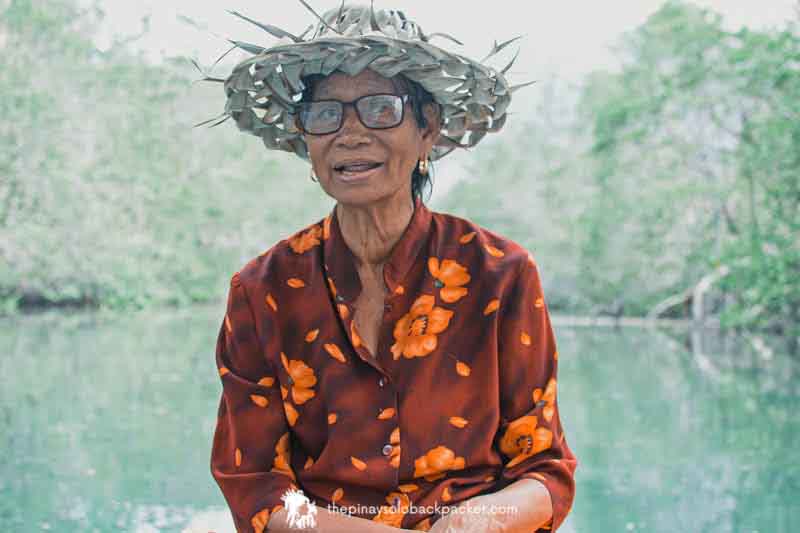
Lady Mangrove, Sabang Mangrove Forest Tour Guide
I really appreciate my experience of the Sabang Mangrove Forest . It reminds me of the time we kayaked on our own through the mangrove forest in San Vicente. But for this tour, we really paddled through the mangrove forest that gave us an astounding view into the heart of this serene territory. Our boatman, Tamilok King , rowed through the niches of this salty paradise, while Lady Mangrove, our amiable tour guide, explained the history and stories of the mangrove and showed us the wildlife that will make you appreciate this eco-tourism activity.

Sabang Mangroves Forest Tour in Puerto Princesa, Palawan
Sabang Mangrove Forest is home to many marine animals and reptiles including the the mangrove snake (Bioga dendrphila) and the water Asian monitor lizard ( Varanus salvator ), which looks like a smaller Komodo dragon of Indonesia. During our mangrove tour in Sabang, we also spotted some resident monkeys playing above the mangrove trees. Sabang Mangrove Forest is also a birding spot, it is reportedly home to some endangered birds such as the Palawan peacock pheasant (Polyplectron emphanum), the stork-billed Kingfisher ( Halcyon capensis ), and the white-collared kingfisher ( Egretta sacra ). We didn’t encounter any of those birds, but if you visit the Palawan Wildlife and Rescue Center (Crocodile Farm), you can see some of those rescued birds.

Tamilok King, Sabang Mangrove Forest Boatman
Straddling both land and sea, the towering age-old mangroves in Sabang are so enchanting. The dense knot of their prop roots that serves as nurseries for fish and marine life make them appear to be standing on stilts above the water. And they help the trees endure the casual rise and fall of tides. The mangrove branches that offer habitat to birds and other wildlife sway beautifully to the cool breeze. And their gorgeous leaves are reflected on the emerald green waters. I imagine how it looks like early in the morning, it must have been breathtaking to see the mist-filled jungle. But since we visited in the afternoon already, I found comfort in experiencing the pleasant Komorebi , a Japanese word for scattered light that filters through the canopy of the forest when the sunlight shines through the trees. While making our way back, our knowledgeable guide, Lady Mangrove, sang her own version of a Tagalong song for the Sabang Mangrove Forest. It was an unreal experience.
EATING TAMILOK

tamilok inside a dead mangrove wood
After our Sabang Mangrove Tour, our boatman excitedly showed us how to get the famous Puerto Princesa delicacy called tamilok (woodworm). It’s actually a species of salt water clam called Teredoi navalis , nicknamed naval shipworm because it makes its way to the wood. Tamilok in the Philippines thrive on mangroves, mostly found on dead submerged mangrove trees. Our boatmen split the rotten wood open and found tamilok. Lady Mangrove, our guide, then cleaned it with saltwater before finally cleaning it with tapwater. Tamilok is typically served like kinilaw (ceviche). It is cured in vinegar, salt, lime juice, and chili. Then, you can swallow it whole.
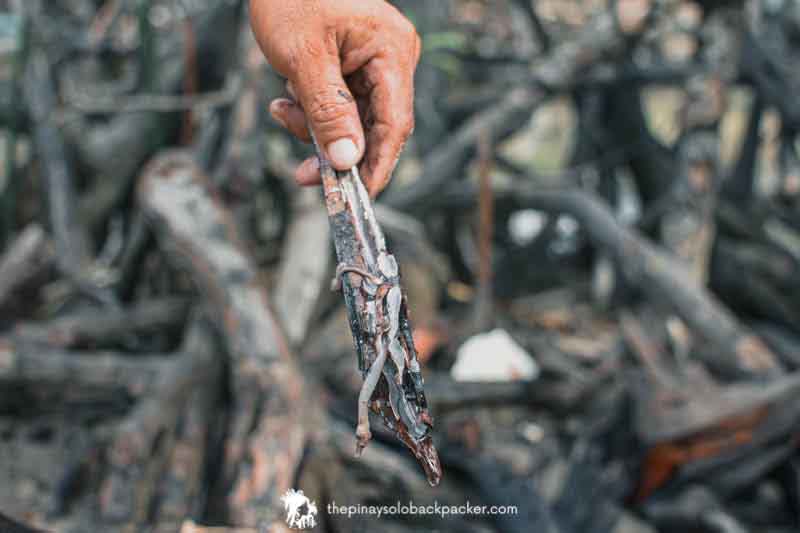
I’ve tasted tamilok before, but I‘ve never seen it prepared raw, its procedure, from getting the deadwood, to splitting it open, retrieving tamilok , cleaning it, and curing it. It was a unique experience. How does tamilok taste? For me it tastes like oyster, kind of milky, salty, and gummy. I highly encourage you experience eating tamilok while in Sabang or Puerto Princesa. It looks outrageous, but it’s delicious!

cured Tamilok
SABANG MANGROVE FOREST SIDETRIP

Sabang Beach, Puerto Princesa
Sabang X-Zipline: RESERVE HERE
How to get to sabang mangrove forest.

Road to Sabang Mangrove Forest from Sabang Port
SABANG MANGROVE FOREST BOAT RENTAL + ENTRANCE FEE

Inside the Boat during the Sabang Mangrove Forest Tour (life vest taken off for photo purposes)
WHERE TO STAY IN SABANG, PALAWAN
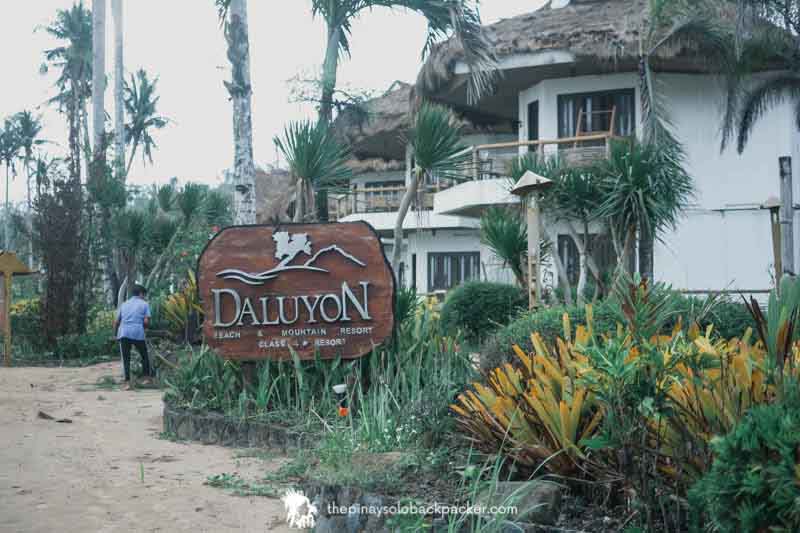
Daluyon Beach and Mountain Resort, where we stayed during our Puerto Princesa Trip
DOT-accredited hotels in Sabang, Puerto Princesa:
- Daluyon Beach and Mountain Resort
- Location: Sabang, Palawan
- RESERVE HERE
The following are the budget accommodations in Sabang, but they’re not DOT-accredited:
- Dabdab Tourist Inn
- Hill Myna Beach Cottage
PUERTO PRINCESA TRAVEL TIPS AND REMINDERS
- Wear your life vest during the Sabang Mangrove Forest Tour (I only removed my life jacket during photo ops when the boat isn’t moving.)
- Dispose your trash properly.
- Stay hydrated. Bring your own refillable water bottle.
- Observe wildlife from afar to avoid disturbing them.
- Let nature’s sound prevail. Keep your voice down and be considerate to other visitors.
- Leave what you find – rocks, sand, plants, etc.
- Flying of drone is prohibited in Sabang Protected Areas.
*The Department of Tourism has an ongoing campaign called “#KeeptheFunGoing” where people are encouraged to do simple and fun gamified campaign sustainable challenges such as “zero-waste warrior”, “certified foot soldier”, “restourism advocate challenge”, and “ecostaycationer”. For more information about the challenges and more ways to be a sustainable tourist, visit: philippines.travel/saveourspot
RELATED TRAVEL BLOGS:
Puerto princesa travel requirements 2022, puerto princesa itinerary, responsible tourism in palawan, related posts.
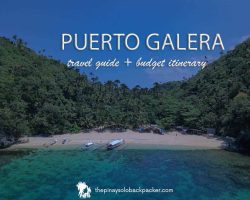
PUERTO GALERA ITINERARY (TRAVEL GUIDE + BUDGET) 2024
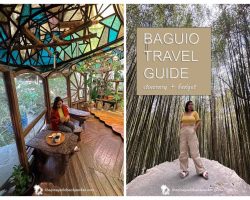
BAGUIO TRAVEL GUIDE (ITINERARY + BUDGET) (2024)
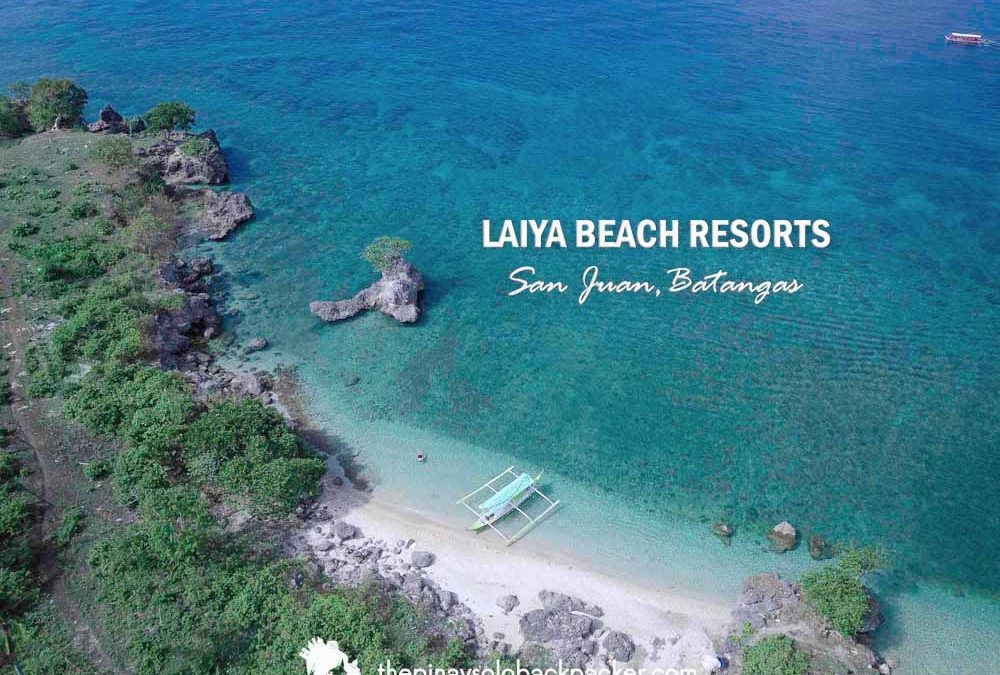
LAIYA BATANGAS BEACH RESORTS AND HOTELS (2024)
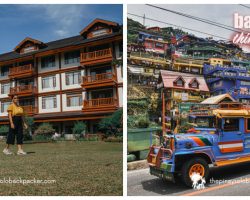
42 BAGUIO TOURIST SPOTS + ITINERARY (2024)
Submit a comment cancel reply.
Your email address will not be published. Required fields are marked *
- BEACH RESORTS
- BORDER CROSSING BY BUS
- Cruise Guide
- FERRY SCHEDULE AND RATES
- General Santos
- Historical Sites
- Hotels and Resorts
- Shiragawago
- SHIRAKAWA-GO
- Cameron Highlands
- Kota Kinabalu
- Kuala Lumpur
- New Zealand
- Cagayan North
- Camarines Norte
- Caramoan Island
- Catanduanes
- Davao del Sur
- Ilocos Norte
- Lanao del Norte
- Kalanggaman
- Mindoro Occidental
- Puerto Galera
- Negros Oriental
- Nueva Ecija
- SAN TEODORO
- Puerto Princesa
- San Vicente
- Quezon Province
- Northern Samar
- Surigao del Norte
- Surigao del Sur
- Capones island
- Zamboanga City
- Zamboanga del Norte
- Solo Female Travel 101
- South Cotabato
- Star Cruises
- Kanchanaburi
- Tourist Spots
- Travel Apps
- Travel Gadget
- TRAVEL GADGETS
- Travel Guide
- TRAVEL REQUIREMENTS
- Uncategorized
- UNESCO World Heritage Site
- HO CHI MINH CITY
COPYRIGHT NOTICE:
Terms of use:.

- Privacy Overview
- Strictly Necessary Cookies
This website uses cookies so that we can provide you with the best user experience possible. Cookie information is stored in your browser and performs functions such as recognising you when you return to our website and helping our team to understand which sections of the website you find most interesting and useful.
Strictly Necessary Cookie should be enabled at all times so that we can save your preferences for cookie settings.
If you disable this cookie, we will not be able to save your preferences. This means that every time you visit this website you will need to enable or disable cookies again.
Got a question? Text us on Whatsapp
+1 617 404 2125
- Tours in Palawan
Palawan Attractions
Sabang mangrove forest, attractions details, find it on google maps.
5 stars 4 stars 3 stars 2 stars 1 star 0.00/5 - (0 Votes) Natty Local tour guide "Visit the Mangrove Forest in Palawan during the early morning hours to avoid the crowds and experience a serene paddle through the calm waters. Don't forget to ask your guide about the 'secret spot' where you can sometimes spot rare bird species that are hidden from the main path."
What is Mangrove Forest?
The Mangrove Forest in Palawan isn't just a mere cluster of trees near the coastline—it's a cradle of life where the land meets the sea. Spanning across various parts of the island, including but not limited to the protected areas in Puerto Princesa and the tranquil Sabang, this network of mangroves serves as a vital ecosystem teeming with biodiversity and a natural barrier protecting the coastal communities from the wrath of the ocean.
Having spent countless days navigating the serpentine waterways that these forests offer, I've witnessed firsthand how they serve as a nursery for many marine species. The forest canopy provides shelter for various bird species, while its complex root systems trap sediments, improving the quality of the surrounding waters.
Our Most Popular Tour:

Whether you're looking for Mexico City excursions that are family friendly or just want to discover some of the city's most breathtaking landmarks, the Mexico C...
History of Mangrove Forest
The history of the mangrove forests in Palawan is intertwined with the lives of the local communities and the island’s ecological evolution. For generations, these woods have been a source of livelihood, offering wood for construction and a place for local fishermen to gather their catch. However, their history wasn't always as serene as it is today.
Logging and the demand for charcoal once threatened their very existence. It was through the collective efforts of Palawan's people, government, and environmentalists that these practices were curbed. Restoration and conservation projects have since taken root, with local communities taking an active role in ensuring these forests thrive.
Now, they stand as a testament to what can be achieved through the determination to safeguard our natural heritage. In the historical context, these forests symbolize not just survival, but resilience and a commitment to sustainability.
Why is Mangrove Forest Important?
The importance of the Mangrove Forest in Palawan cannot be overstated. On an ecological level, mangroves are incredibly efficient at carbon sequestration, significantly more so than terrestrial forests. This means they play a critical role in mitigating the effects of climate change by absorbing large amounts of carbon dioxide from the atmosphere.
But their value extends beyond environmental functions. For local communities, the mangroves are a vital part of their heritage and daily life. They are sources of food, medicine, and materials, and they also offer natural protection against tsunamis and storm surges, effectively safeguarding lives and property.
Furthermore, the Mangrove Forest in Palawan is a splendid hub for ecotourism. Its raw beauty and the opportunity to witness the interdependence of species draw visitors from all over the world, which in turn supports the local economy and educates the public about the significance of preserving such ecosystems.
Things to Do & See at Mangrove Forest
When you step into the Mangrove Forest of Palawan, you enter a world very different from the usual white sandy beaches and clear blue seas of the Philippines. One of the most enchanting experiences you can have here is to embark on a mangrove paddle boat tour. Imagine gliding peacefully through the quiet waterways, accompanied only by the sound of wildlife and the gentle splash of oars.
Our Top Trending Thailand Tours:
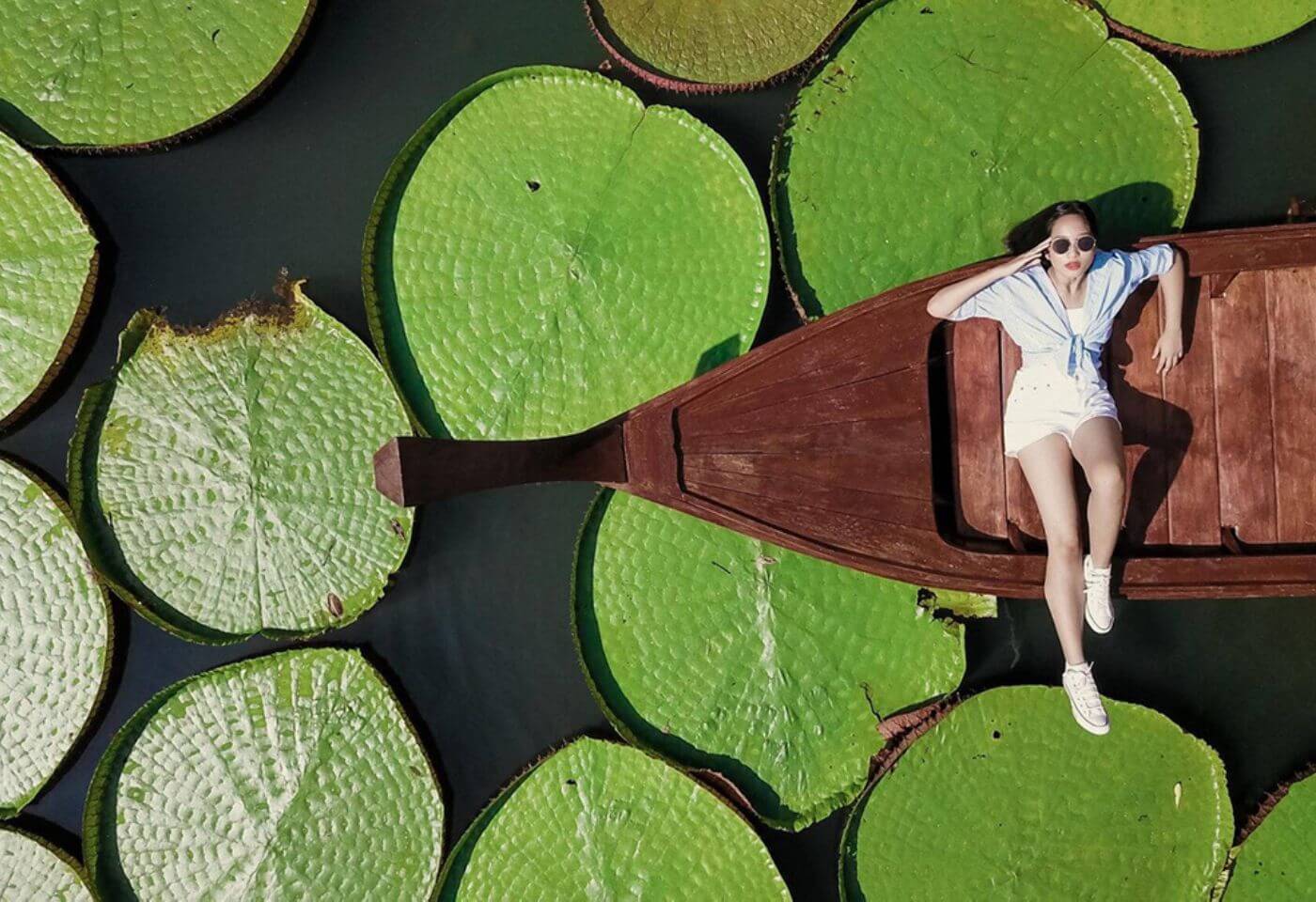
Phuket Giant Water Lilies and Temple Tour

Ultimate Chiang Mai Countryside Tour (Half Day)
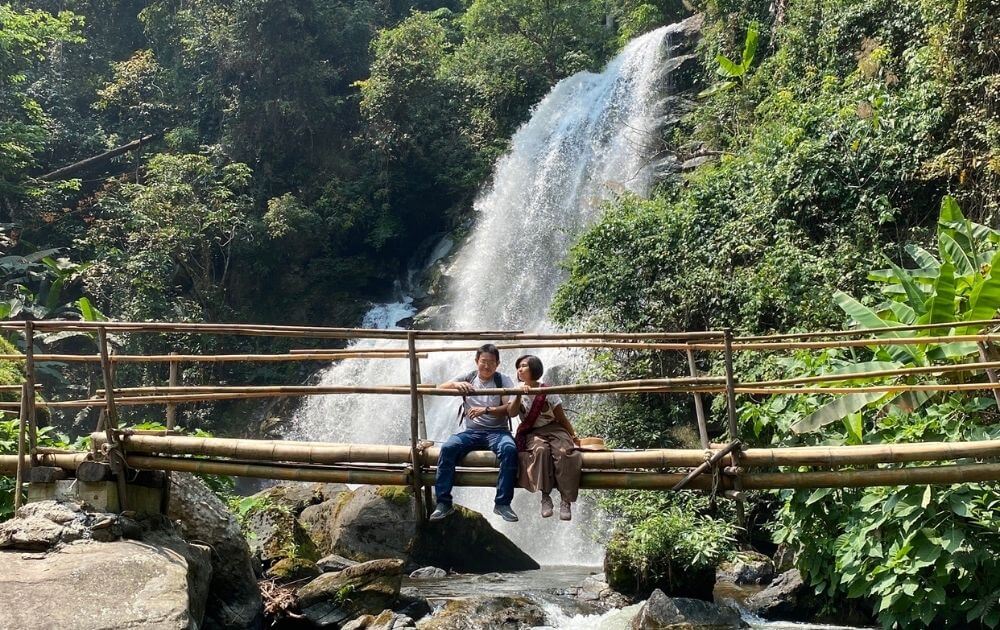
Chiang Mai Doi Inthanon & Pha Dok Siew Waterfall Tour
Fishing is another activity deeply rooted in the mangrove experience. With guidance from a local who knows these waters like the back of his hand, you might as well get your hands on a diverse range of marine life found amongst the mangroves. Additionally, for those keen on bird watching, this forest is a sanctuary filled with endemic species, some of which can only be spotted amongst these tangled roots and foliage.
The boardwalks, where they exist, provide a means of traversing these habitats without disturbing them, allowing you a closer look at the flora and fauna. Did you know that there are several types of mangroves, each adapted to varying conditions? You might spot the bakawan, noted for its tangled prop roots, or the pagatpat, with its unique pencil-like pneumatophores emerging from the mud.
Sustaining and interacting with the environment responsibly ensures that future generations will also be able to enjoy and learn from the Mangrove Forest. It's a symphony of ecological interactions—a place that will surely captivate your senses and deepen your appreciation for nature's intricacies.
Frequently asked questions
The Mangrove Forest in Palawan is a natural area consisting of tidal habitats and mangrove species. It is an important ecological site that supports biodiversity and provides protection against erosion and natural disasters.
Visitors can explore the Mangrove Forest in Palawan by booking a guided tour, which often includes a boat ride through the mangrove channels or walkways built to navigate the area without disturbing the ecosystem.
The main attractions of the Mangrove Forest include the diverse wildlife such as birds, reptiles, and fish, the serene natural environment, and the opportunity to learn about mangrove conservation.
Yes, guided tours are available for visitors to the Mangrove Forest. These tours are typically led by knowledgeable guides who can share information about the mangroves and their importance to the ecosystem.
The best time to visit the Mangrove Forest in Palawan is during the dry season from October to May when the weather is more predictable and conducive for tours. However, visitors can appreciate different aspects of the forest in each season.

Lu-Li Island
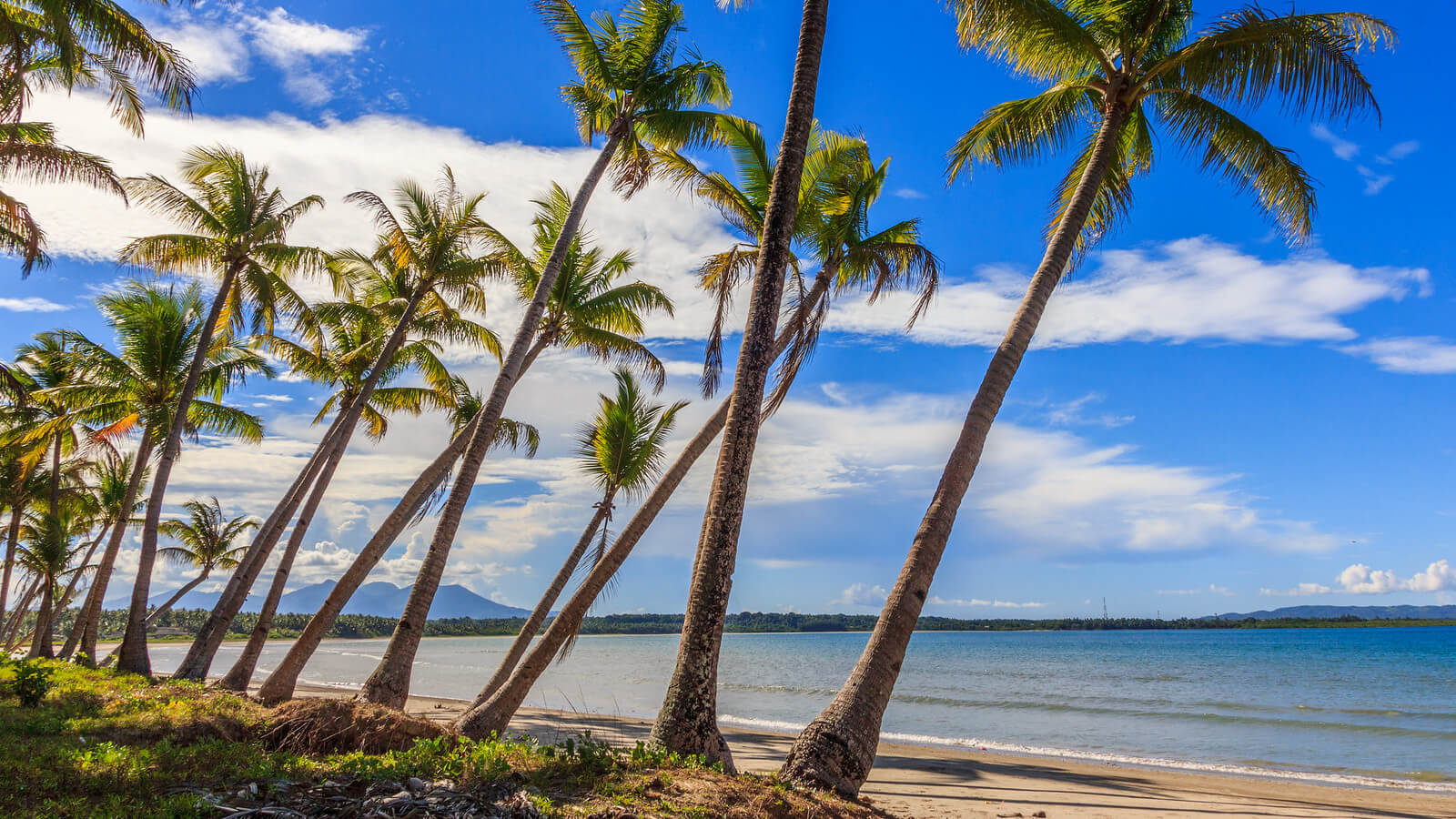
Rizal Beach
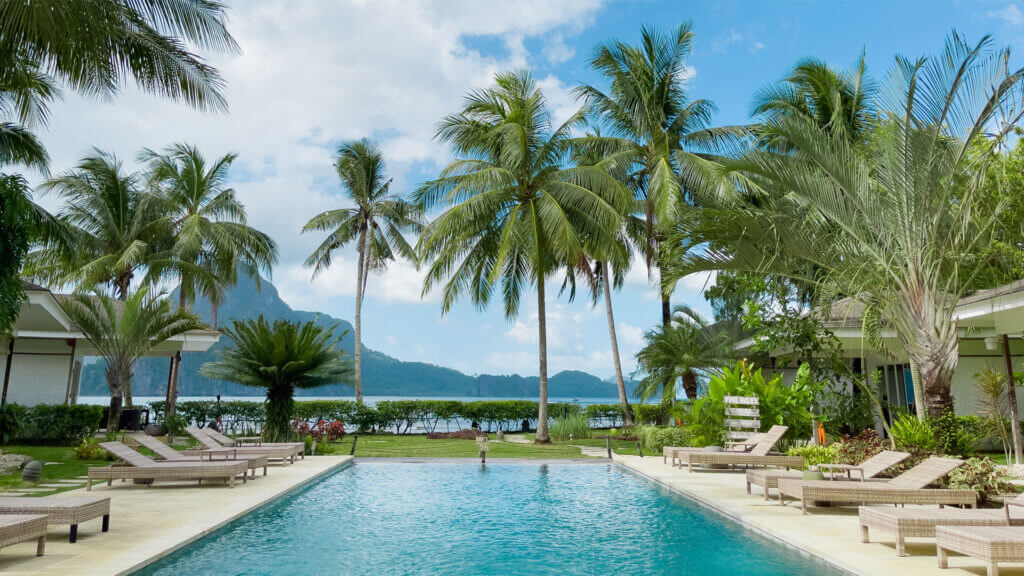
Cadlao Island
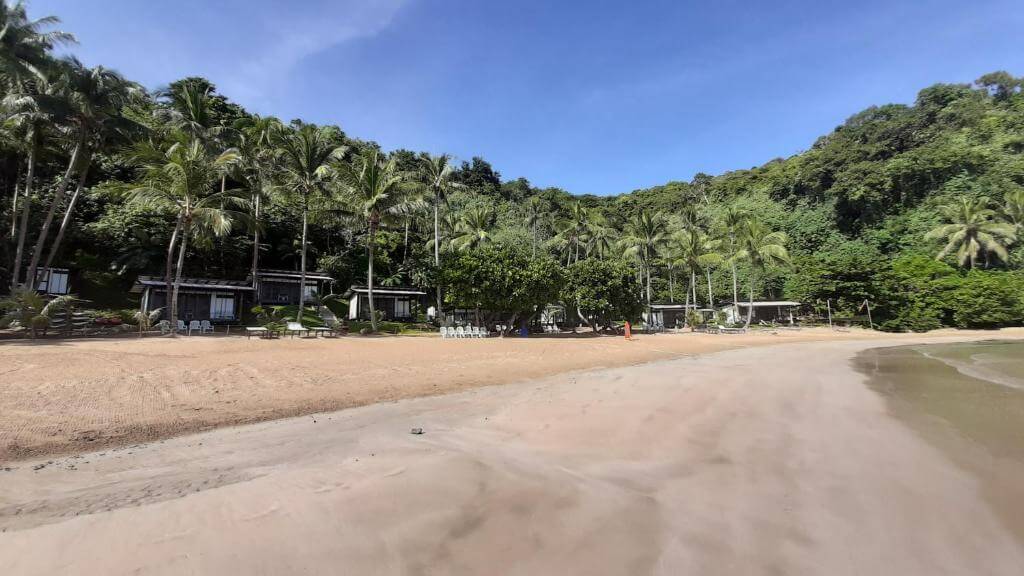

YourPalawan is your gateway to Palawan
Paradise unlocked from the best island in the world.

Mangrove Paddle Boat Tour: A Community-Based Sustainable Tourism Site Thriving in Sabang, Puerto Princesa, Palawan
Sabang, Cabayugan, Puerto Princesa, Palawan – Nestled on the picturesque island of Palawan, renowned for its stunning natural beauty, the Mangrove Paddle Boat Tour has emerged as a shining example of community-based sustainable tourism. Located in the enchanting village of Sabang, near the Underground River, this unique attraction allows visitors to immerse themselves in the captivating mangrove ecosystem while supporting the local community’s conservation efforts.

The Underground River is both a UNESCO World Heritage Site and one of the New 7 Wonders of Nature, considered to be the world’s longest navigable underground river.

The Mangrove Paddle Boat Tour offers an engaging and educational experience that not only showcases the mesmerizing beauty of the mangroves but also highlights the importance of preserving this vital coastal ecosystem. Visitors have the opportunity to explore the dense network of 47.55 hectares of mangrove forests, beach forest, molave forest, dipterocarp forest, mossy forest and peat forest that fringe the pristine waters of Sabang Bay.

There are a total of eight species of mangrove in the area from the total of 47 species found in the Philippines. The guides will gladly identify the gender of the mangrove among which is Rhizophora apiculata, its scientific name, as the male mangrove which is the most dominant in the area. The female mangrove is called Rhizophora mucronata. Both produce its seeds and fruits. Also prominent in the area is the tabigi mangrove with its scientific name, Xylocarpus granatum.

Found deep in the mangrove habitat are the so-called century mangroves which are more than a hundred years old and towering in its height. Accordingly, these century mangroves is now found only in Palawan as the mangrove trees, considered as hardword are being cut by humans for building materials, furnitures, firewood etc. Large swaths of mangrove areas have also been converted into fishponds and this is one of the main contributors of its destruction.
The Philippines used to have 500,000 hectares of mangrove forest but now it is estimated to be left with only 120,000 hectares. Many would agree that human activity is the culprit in the deforestation of the mangrove areas. And out of the current 120,000 hectares, almost half or 48,000 hectares is found in the province of Palawan. This is one of the main reasons why Palawan continue to supply more than half of Metro Manila’s fish demands. The mangrove area provide a rich breeding ground for variety of fish. Research has found that one hectare of mangrove is capable of producing 1.8 tons of fish in a year.

Research conducted in Sabang found that two-thirds of the fish enter the river to lay eggs. Among them is milkfish locally known as Bangus. The Sabang river is locally known as Puyoy-Puyoy River which means “pocket” which was coined by the Tagbanwa tribes people who used to inhabit this place. Due to familiarity the river has now been called as Sabang River by most. Sabang has its meaning in the local dialect as brackish water or a mix of salty and freshwater.

What also sets this tour apart is its community-driven approach and was spearheaded and supported by Conservation International, Palawan Conservation Corps, Local Community of Cabayugan, Puerto Princesa City Tourism Office, the Management of Underground River and the Cabayugan Barangay Council. And with the initiative of the local community who now have eighteen members, the protection and conservation of the mangroves was born. By engaging visitors in sustainable practices and educating them about the significance of mangroves, the community aims to foster environmental awareness and create a sense of responsibility towards the ecosystem.

Tourists are guided through the 1.2 kilometer distance tranquil waterways by knowledgeable local guides, who share insights into the mangroves’ unique flora and fauna. (The river stretches further up to the source but the waterway becomes narrow to be able to navigate with boat.) The guides also shed light on the ecological importance of mangroves in preserving biodiversity, providing coastal protection, and supporting local fisheries. Visitors are encouraged to ask questions and actively participate in conservation efforts.

The paddle boat tour showcases the intricate mangrove root systems, home to a diverse array of wildlife including monkey, snakes, colorful birds, lizards, reptiles and squirrels. Among the birds found here are endemic in Palawan such as the Palawan Peacock-Pheasant and Palawan Hornbill. Adventurers can witness the harmony between nature and the local community, as they paddle through narrow channels.

The community’s sustainable approach is evident throughout the tour. The paddle boats are carefully designed to minimize any impact on the delicate mangrove ecosystem, ensuring a low-carbon footprint. Visitors are encouraged to adhere to eco-friendly guidelines, such as refraining from littering and respecting the natural habitat.

Furthermore, the Mangrove Paddle Boat Tour is a catalyst for community development. The initiative has generated employment opportunities for the locals, empowering them to be the custodians of their own heritage. Profits from the tour are reinvested into community initiatives, such as education programs and infrastructure improvements, benefiting the entire village.

The efforts of the Sabang community have not gone unnoticed. The Mangrove Paddle Boat Tour has gained recognition for its sustainable practices and contribution to responsible tourism. It has since received grants from the United Nations Development Program (UNDP) and the United States Agency for International Development (USAID). The Forest Foundation Philippines together with UNDP and USAID was able to support the community by putting up a bird watching area along the river which is made of bamboo and 100 meters deep through a dense mangrove forest which is open for bird aficionados and nature lovers.
As word spreads about the Mangrove Paddle Boat Tour, an increasing number of tourists are flocking to Sabang to witness the splendor of the mangroves and support the local community’s conservation endeavors. Visitors leave with a deeper understanding of the significance of mangroves and the role they play in maintaining the ecological balance.

The Mangrove Paddle Boat Tour in Sabang, Puerto Princesa, Palawan, exemplifies the power of sustainable tourism when driven by community engagement and environmental stewardship. It stands as a shining example of how tourism can positively impact both nature and communities, inspiring other destinations to follow suit and contribute to a more sustainable future.

Entrance fee is P350 inclusive of tour and entertaining and knowledgeable guides who will gladly explain the conservation efforts and how important the wildlife and the ecosystem. That includes a song number which can be sang in multiple languages. Most tourists avail of the tour enroute to the Underground River.
Bird Watching Tour is P450 and considered a special tour which will start at 6am up to 8am so reservation is required a day ahead of schedule.
For reservations, you may ask the travel agency you book your underground river tour for information about the Mangrove Paddle Boat Tour.
Share this:
- Click to share on Twitter (Opens in new window)
- Click to share on Facebook (Opens in new window)
YourPalawan
Leave a Reply Cancel reply
Discover more from yourpalawan is your gateway to palawan.
Subscribe now to keep reading and get access to the full archive.
Type your email…
Continue reading

Puerto Princesa Tourism
Sabang mangrove paddleboat tour.
Found in Barangay Sabang in Puerto Princesa City, Palawan are a swamp forest and a mangrove forest that offers a side trip (from the Puerto Princesa Underground River Tour) that shouldn’t be missed, the Sabang Mangrove Paddleboat Tour where visitors can go on a less than an hour tour around the mangrove forest, see hundreds of mangroves and learn about the flora and fauna that thrive in the area, and the importance of mangroves to the ecosystem of Palawan

Mangrove Paddle Boat Tour

- See all photos

Similar Experiences

Most Recent: Reviews ordered by most recent publish date in descending order.
Detailed Reviews: Reviews ordered by recency and descriptiveness of user-identified themes such as waiting time, length of visit, general tips, and location information.
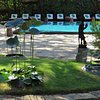
Mangrove Paddle Boat Tour - All You Need to Know BEFORE You Go (2024)
Mangrove Paddle Boat Tour

- See all photos

Similar Experiences

Most Recent: Reviews ordered by most recent publish date in descending order.
Detailed Reviews: Reviews ordered by recency and descriptiveness of user-identified themes such as waiting time, length of visit, general tips, and location information.

Mangrove Paddle Boat Tour - All You MUST Know Before You Go (2024)
Exploring Sitio Sabang, Palawan: Mangrove Paddle Boat Tour
- Raz & Sonny
- May 4, 2017
After our Underground River tour, we have some more time ready to be spent here in Sitio Sabang. So, we started to look for the way going to Mangrove Paddle Boat Tour .
This post is a part of Puerto Princesa, Palawan: A Walk-through to the City of Living God article. Go back to the main article to see more of Puerto Princesa. You may also want to visit the first part of Sitio Sabang here: Beauty of Sitio Sabang, Palawan: The Gateway to Underground River .
Sitio Sabang is plain and boring, you’ll do underground river and what’s next, go back to the city? Oh no! You’re wrong for that. You can actually do more here in Sabang and one of those things is the Mangrove Paddle Boat Tour.
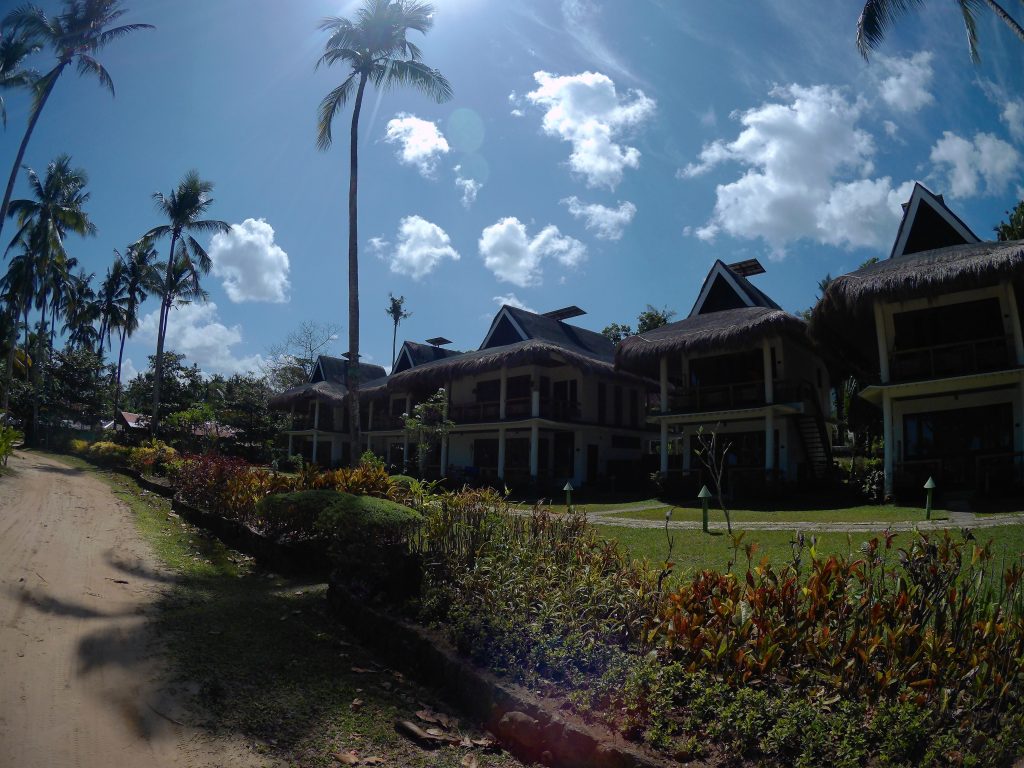
We found ourselves walking along the shoreline passing through many resorts and accommodations in the area. It is like: Where is the registration area? Well, there are basically no signage going to Mangrove Paddle Boat. You will be easily lost when you are not observant. We passed by what I believe a private property and were charged 10 pesos per person to be allowed to enter the premises. We are just walking and others are riding utility van or motorcycle. I guess they are the ones who availed the mangrove tour together with a package.

Mangrove Paddle Boat Tour
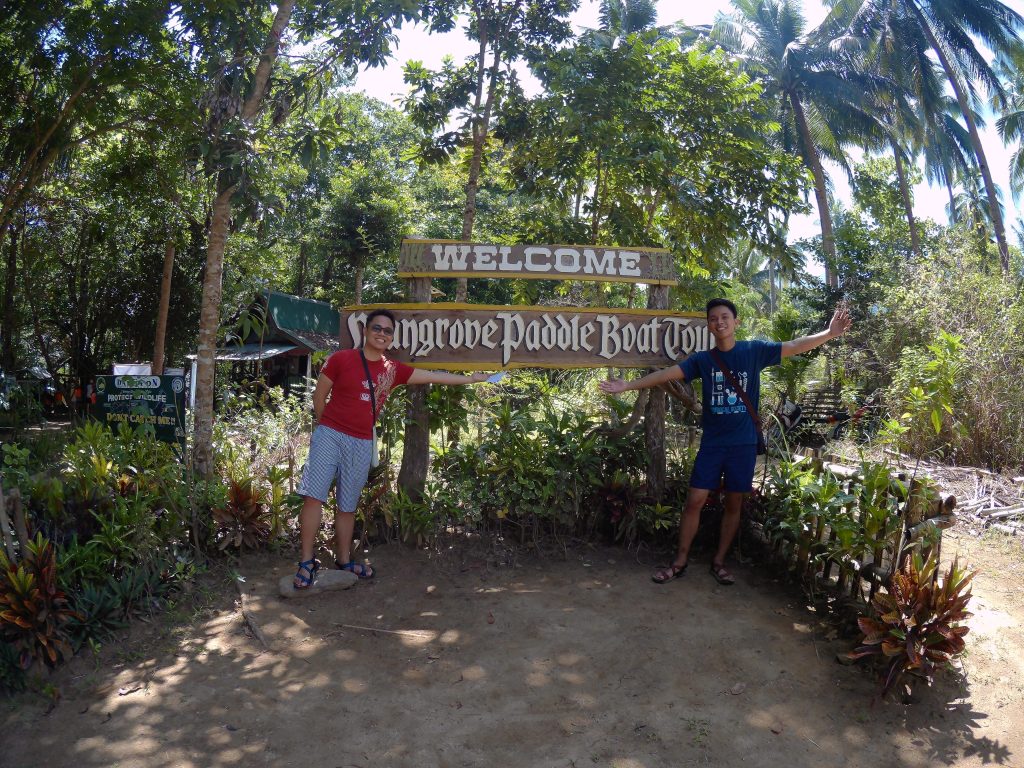
Everyone should wear a life vest for safety purposes. Some areas of the Sabang River is deep. Well, you can’t notice it since the water is a bit murky and it reflects all the green leaves of the mangroves around the area.
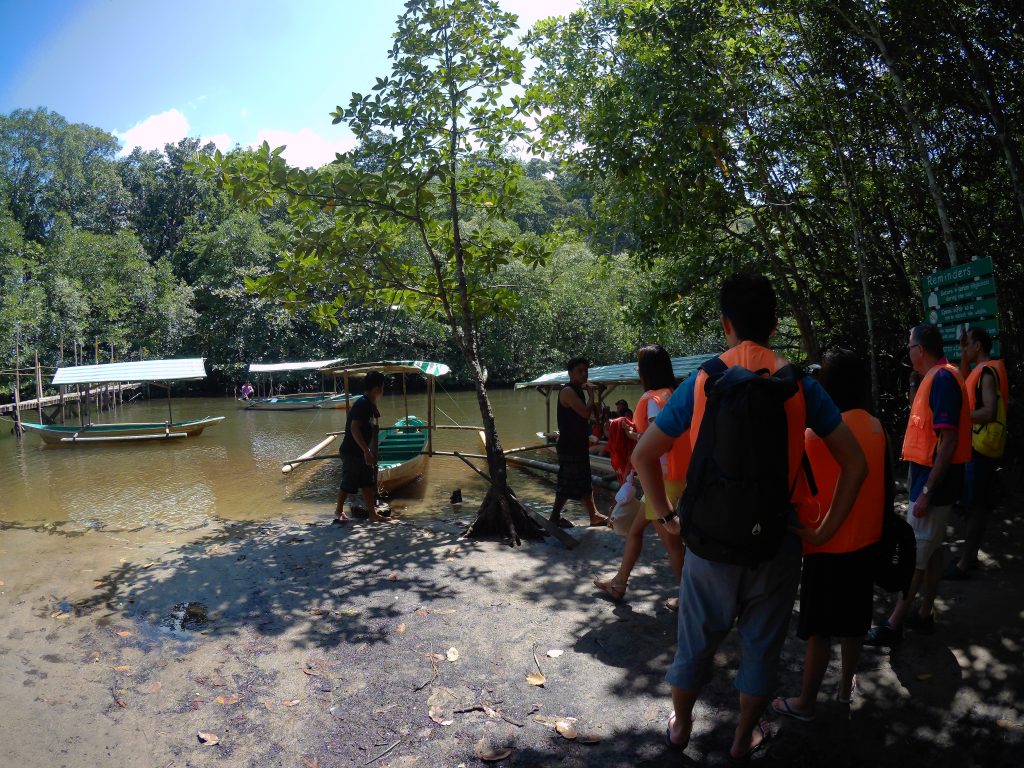
The paddle boat has a maximum capacity of 8 passengers with 1 boatman and a tour guide. In our case, our boatman also served as the tour guide. I must say he knows many things about the area and the mangroves.

Importance of Mangroves
The entire mangrove forest found here in Sitio Sabang is one of the largest that can be found here in the Philippines. That is evident on how many tons of fishes being sold in Metro Manila comes from Palawan. The connection? Mangrove forests serve as a nursery not only for variety of fishes but crabs, shrimps and mollusks too.
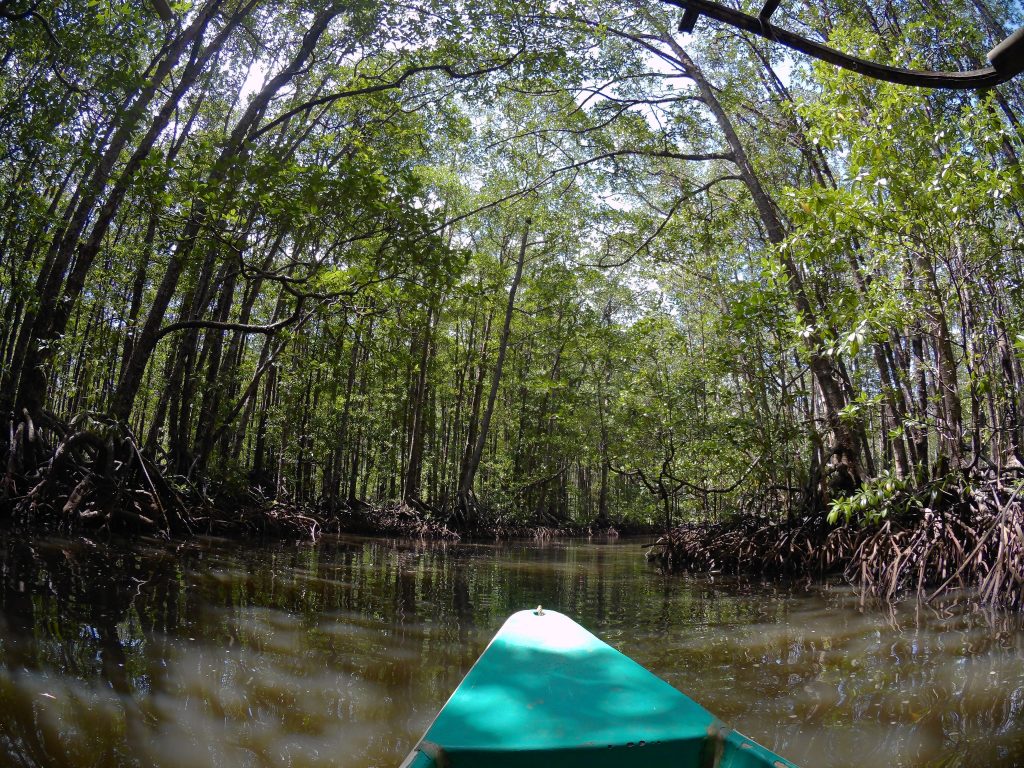
This shot might look creepy for some. But hey, this is vital to the survival of not only marine fisheries but for the habitat of the wildlife too. I found many monkeys roaming around the area that is feeding on what they can found in the forest where they also live. Can we forget the snakes hanging around the mangroves? Yes, there is.

Mangroves also serve as a “filter” of the water and therefore, improve the coastal water quality on the area by removing pollutants and particulate matter from land-based sources. This is a very important maintenance role of the mangroves in addition of cycling of nutrients for the benefit of nearby coral reefs and sea grass habitats.
Exploring the Area
After having a Mangrove Paddle Boat Tour, you can also do bird watching and zipline. We did not try any of these here since we need to checkout on our accommodation, and catch our booked Lexxus Shuttle trip going back to city proper. Rather, we spend the extra time we had exploring Sitio Sabang shoreline. Here are some pictures:
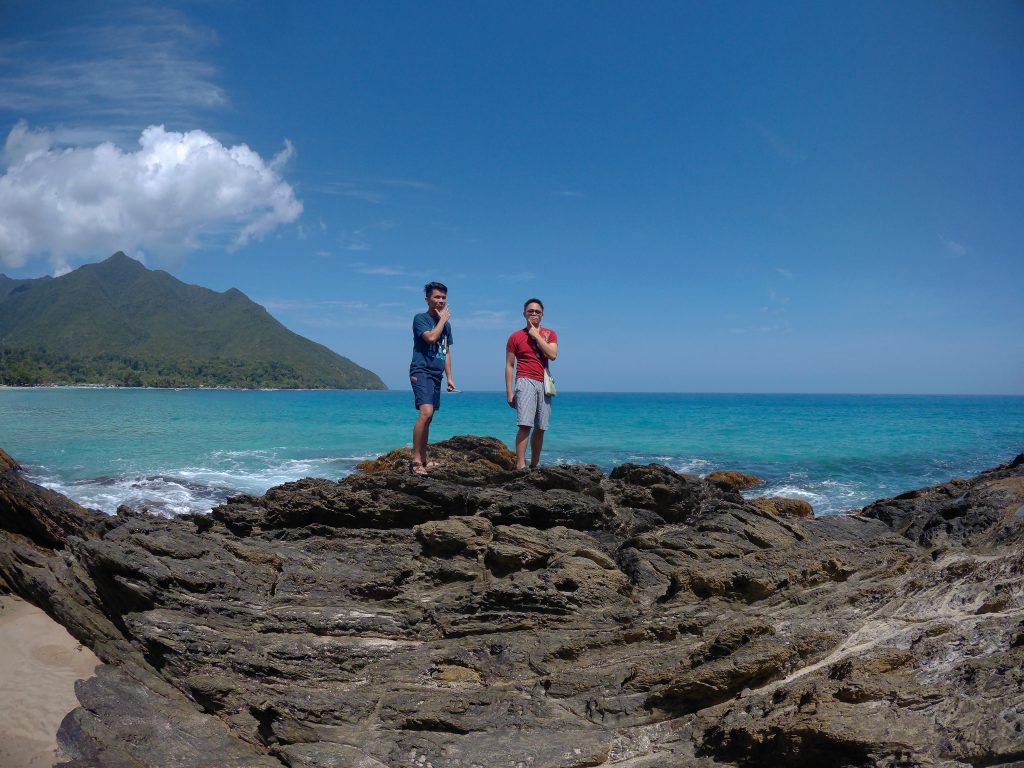
We are not able to further explore these rock formations since we are running late for the Lexxus trip. If you are wondering where is this place, this is on the far right side of the beach (you, facing the sea). It is near the unpaved road going to the Mangrove Paddle Boat tour.
Sitio Sabang is indeed a beauty of its own. If your time permits, pay a visit to its beach and other activities it offers. This post is the part 2 of our Sitio Sabang Exploration. First part can be read here.
Continuing Puerto Princesa City Tour, Day 3
After arrival in San Jose Common Terminal from Sitio Sabang, we are now ready to continue our city tour in it’s 3 rd day! 😀 First stop: Mitra Ranch and of course, pasalubong shopping at Baker’s Hill, Palawan .
Up Next: Mitra Ranch, Puerto Princesa: Overlooking the Islands of Honda Bay
You Might Also Like
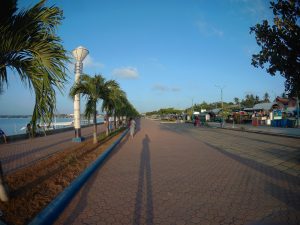
Puerto Princesa, Palawan: A Walk-through to the City of Living God
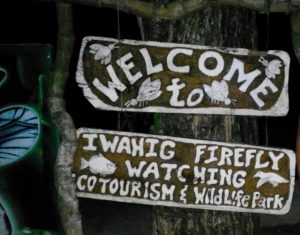
Lights Out! Let Them Shine: Ihawig Firefly Watching, Palawan

Crystal Waters of Honda Bay, Palawan: A Half Day Island Tour (DIY)
Dewil Mangrove Tour
- 💎 Hidden Gem
All Details
More details.
Mangrove Paddle Boat Tour

- See all photos


Similar Experiences

Most Recent: Reviews ordered by most recent publish date in descending order.
Detailed Reviews: Reviews ordered by recency and descriptiveness of user-identified themes such as waiting time, length of visit, general tips, and location information.

Mangrove Paddle Boat Tour - All You Need to Know BEFORE You Go (2024) - Tripadvisor
Mangrove River

Top ways to experience nearby attractions

Most Recent: Reviews ordered by most recent publish date in descending order.
Detailed Reviews: Reviews ordered by recency and descriptiveness of user-identified themes such as wait time, length of visit, general tips, and location information.
Also popular with travelers

MANGROVE RIVER: All You Need to Know BEFORE You Go (with Photos)
- (0.00 km) Cherry's Transient Hub - Port Barton
- (0.00 km) Villa Kagueban
- (0.00 km) MiL's Hillside Tourist Inn
- (0.00 km) Prince John Lodging And Restaurant
- (0.00 km) Jungle Bar Pension House
- (0.00 km) DOSE Specialty Coffee
- (9.96 km) Mojitos RestoBar
- (10.38 km) Hotel Oasis Port Barton Inc
- (9.92 km) Milano Cafè
- (10.02 km) Olive's Crib Restaurant
- Municipal News
- Provincial News
- ENVIRONMENT
- TRAVEL & TOURISM
- INFRASTRUCTURE & DEVELOPMENT
- LATEST STORIES
- Arts & Culture
- Entertainment
- Agriculture
- SPECIAL REPORT
- Vice President
- Party List Groups
- Vice Governor
- Board Members
- District Representatives
- City Councilors
- Brooke’s Point
- Cagayancillo
- San Vicente
- Sofronio Española
- PRESS RELEASE
- On Checking Facts
- On Corrections

Puerto Princesa invites tourists to experience Sabang Mangrove Paddle Boat Tour

The Sitio Sabang, Barangay Cabayugan paddle boat tour adventure is being offered by the City Tourism Department (CTD) to residents and visitors from around the world who have not yet visited the site, which is known for its old-growth mangrove forest and bird-watching opportunities.
CTD chief Demetrio Alvior Jr. said the area which covers a unique mangrove ecosystem, shouldn’t be overlooked as a short detour along the way to the Underground River.
“Ito ay isang uri ng tour kung saan makikita ninyo ang ating mga century-old mangrove trees. Ito rin ay isang area kung saan the best magkaroon ng bird watching at matuto ng boat paddling,” Alvior said, citing it is also Puerto Princesa’s learning site for planting mangroves.
(On this kind of tour, you will encounter mangrove trees that are more than a century old. Additionally, it is a location where you can learn to paddle a boat and is best for bird watching.)

In order to help maintain and preserve its mangroves, tourists who join the tour will be required to plant mangrove trees.
Monkeys, sawa or pythons, the mangrove snake binturan , monitor lizards, endangered birds, and other animal species can be found in the place because of its preserved ecosystem.
“Nagkakahalaga lang ng P350 kada tao ang inyong pag-tour sa Sabang mangroves. Sasakay na kayo ng bangka, meron na kayong boatman na mag-a-assist sa inyo at wala kayong gagawin kundi mag-enjoy lamang sa magandang tanawin,” he said.
(The Sabang mangroves trip costs P350 for each passenger. You will travel in a paddle boat with a boatman helping you, and all you will do is take in the surroundings.)
Children 3-5 years old are free of charge, he said. Food is also not going to be a problem because Sabang has restaurants and other food establishments where refreshments can be bought.

Alvior said visitors from outside Palawan should contact authorized tour operators, while locals should go directly to Sabang to arrange their trips with the community-based sustainable tourism (CBST) association that manages the site.
He claimed that visiting tour locations run by CBST associations will help to give them employment possibilities while guests enjoy.
For inquiries, contact Celestino Santander at 0935 689 3919.
Share this:
- Click to share on Twitter (Opens in new window)
- Click to share on Facebook (Opens in new window)
RELATED ARTICLES MORE FROM AUTHOR
Balabac indigenous group opposes SMC-backed ecotourism project
Americans important to Philippine tourism
Roxas unveils DOT pit stop for local, foreign travelers
Gov. Socrates says Philippine Experience caravan is ‘historic’
The best tourism experience is Filipino hospitality – DOT Sec. Frasco
DOT Sec. Frasco clueless on closure rumors surrounding Coron and El Nido
IPPF showcased in Puerto Princesa leg of Philippine Experience caravan
Batak villages see surge in tourists seeking authentic cultural experiences
SoKor travel agents, media partners visit El Nido
Even more news.
Northern lights possible in U.S., power and communications at risk
PPSRNP initiates forest fencing project
Buy-bust in El Nido, 1 arrested
Popular category.
- City News 9005
- Provincial News 3212
- Police 2095
- National 2062
- Municipal News 1903
- POLITICS & GOVERNANCE 921
- ENVIRONMENT 858
- PEACE & ORDER
- PUERTO PRINCESA CITY
- MUNICIPALITY
B.L.A.S.T. – Live Life to the Fullest ……… Don't Stay Put

Mangrove Paddle Boat Tour (Puerto Princesa City, Palawan)
The mangrove-lined Sabang River
Sheridan Beach Resort & Spa Media Tour
After our SabangX Zipline, we were next slated to do the Mangrove Paddle Boat Tour, another activity offered and sponsored by Sheridan Resort & Spa. The mangrove paddleboat cruise offers an educational tour of the mangroves at PhP150 per person. From the zipline landing area, we walked towards the edge of the beach to the mouth of the 4 km. long Sabang River where it flowed out into the West Philippine Sea . At the end of the path, we arrived at Michi’s Cottages where we saw the office for the Mangrove Paddle Boat Tour where we registered our names. We were the last group to avail of the tour.
Start of our tour
At the river bank, we boarded a paddle boat made of fiberglass . Joining PJ, Joy, Charmie, Lester and I were Mr. Nestor Elijan, our mangrove paddleboat tour guide, plus a paddler who would propel our boat with an old-style wooden pole that has one broad flat end. For safety purposes, we were each provided and requested to wear standard life vests . As it was already late in the afternoon, we no longer brought along umbrellas to repel heat from the sun. The tour lasts from 45 mins. to 1 hour.
Tangled roots of mangroves
Hanging roots
As our boatman started paddling through the brackish but serene river water that reflects the tall mangrove trees and their beautifully intermingled protruding roots, Mang Nestor explained the importance of these century-old mangroves (locally called bakawan , from the Tagbanua tribal word bakhaw ) in the marine and forest ecosystems . Palawan contains 43% of the total mangrove forests in the country and Puerto Princesa City is one place where the total area of mangrove forests is increasing and not decreasing.
Limestone rock formations along the riverbank
Mangrove ecosystems like the one in Sabang, breeding grounds to pelagic fishes , also serve as habitats to a collection of mammals, reptiles and amphibians as well. The mangrove forest, a buffer zone between the land and the sea, breaks the waves before it reaches the land and also serves as a blocker for the strong winds during a storm, thus protecting the coast against erosion . Mangroves also filter bad elements of the land such as insecticide and other chemicals and trash. This protects the coral reefs and sea grass beds from being covered by the debris which block sunlight reaching them.
Tour guide Mr. Nestor Elijan
A former park ranger who watched over Sabang’s environs and went after illegal loggers and poachers, Mang Nestor is also a self-taught mangrove scientist who can identify the different kinds of mangroves, along with the scientific names, at a drop of the hat, and tell whether this or that bakawan is male or female through their leaves. A number of mangrove species that can be found here are the Rhizopora apiculata (locally called bakhaw lalaki ), Rhizophora mucronata (known as the loop-root mangrove or the red mangrove, it is found on coasts and river banks and Bruguiera gymnorrhiza . Mang Nestor talked about “true mangroves,” those that thrive only in mangrove environments, and “mangrove associates,”those that grow in the periphery of mangrove wetlands. There are also mangrove trees that are parasitic, “swallowing” another mangrove associate, depriving it of its share of sunlight and soil.
Mangrove Snake
Along the way, we got a number of close encounters with sleeping Mangrove Cat Snakes ( Boiga dendrophila ), a 6 to 8 ft. long, elegant but mildly venomous colubrid snake with black and yellow bands, curled around branches of the overhanging mangrove trees. Mang Nestor told us not to worry, as long as you don’t disturb them they won’t jump. Midway through the tour, our paddle boat passed a makeshift wooden platform with a charming bamboo boardwalk , built over sinuous mangrove roots that led to the bird watching area.
Bamboo boardwalk
As we followed the river deeper into the forest, the river narrowed and became shallower and the mangroves stood very high above the ground, its natural canopy shielding us from the sun’s mighty reach. Somehow, I felt I was in an Amazon forest . On shallower parts of the river, the water spans wider through the forest grounds where roots of the mangroves grow on.
Monitor lizard
We saw other mangrove creatures such as a long-tailed macaque, water monitor lizards ( Varanus palawanensis , locally called bayawak ), mudfish (locally called dalag ) and mangrove and cattle egrets . Other mangrove denizens we didn’t see include mudskippers , crabs, oysters , hornbills , ruddy and stork-billed kingfishers , Palawan bearcats (locally called binturong ), clawed and clawless otters , pangolin or scaly anteater, mayna, and skunks (locally called pantot ).
Dead mangrove tree trunks pockmarked with tamilok holes
On our way back, our paddler alighted among the mangroves to look for some driftwood bored by tamilok ( shipworm ), a marine bivalve mollusk that bores into submerged wood. Back at the receiving area, he hacked open the wood to reveal two small worms (according to Mang Nestor, they sometimes reach a length of 2 ft.). While considered a pest in other countries, the tamilok is a delicacy in these parts and, when dipped fresh in coconut vinegar , are said to taste like oysters. Andrew Zimmern , in one of his episodes in Bizarre Foods, enjoyed eating one of these. However, harvesting the tamilok for commercial purposes isn’t allowed, as this would affect the mangrove’s ecosystem.
Our paddler looking for tamilok
Normally, at the end of the tour, visitors are given a chance to contribute to conservation by planting some mangrove saplings in a designated planting area, so that when it becomes a seedling they would move it deep within the forest. The Mangrove Paddleboat Tour, so peaceful and relaxing, was a totally worthwhile experience. I hope that those who visit Sabang to see the Underground River would include the Mangrove Paddleboat Tour in their itinerary.
A pair of tamilok
Mangrove Paddle Boat Tour : Sitio Sabang, Brgy. Cabayugan, Puerto Princesa City, Palawan. Mobile numbers (Mrs. Norma Ortega): (0912) 322-3665 and (0926) 829-3095. E-mail: [email protected] .
The Mangrove Paddle Boat Tour starts around 8AM to 10AM, depending on the sun’s visibility, as the tour needs light as little sunlight will make the mangrove really dark. The tour still operates during a storm but not during a very strong typhoon. It is best to visit the Mangrove Paddle Boat Tour during low tides as you will see most of the animals, including those that live on the bottom of the water. To protect against annoying mosquitoes, use insect repellent before the tour. They stop touring guests around 4:30PM. The Paddle Boat Tour can be combined with the Sabang X Zipline as both attractions are located very close to each other.
Docking area of fiberglass boats
Sheridan Beach Resort & Spa : Sabang Beach, Sitio Sabang, Brgy. Cabayugan. Puerto Princesa City, Palawan. Palawan Sales Office: Jeco Bldg., Rizal Ave. Extn., Puerto Princesa City. Tel (+63 48) 434 1448 to 49 and 723 7278. Mobile Numbers (+63 917) 308-3245 and (+ 63 917) 308-3245. Cebu Sales Office: Sheridan Bldg., Ouano Ave., NRA, Mandaue City. Tel: (+63 32) 236-1001. Fax: (+63 32) 345-1000. Mobile number: (+63 917) 306-6984. Manila Sales Office: tel: (+63 2) 939-8888. Mobile number: (+63 917) 726-5224. E-mail: [email protected] . Website: www.sheridanbeachresort.com . Instagram: @sheridanresorts Instagram official tag: #SheridanPalawan Twitter: @sheridanresorts Facebook: facebook.com/sheridanbeachresortandspa
Leave a Reply Cancel reply
Your email address will not be published. Required fields are marked *
Coron Travel and Tours

GLITTERING FIREFLIES NIGHT TOUR
Escape the busy life of Coron with your night trip to the largest mangrove forest in Coron Town. Enjoy the romantic boat ride along the mangrove swamps to catch the colonies of fireflies producing magnificent twinkling lights.
Spend time on the water experiencing nature's magic - the supernatural glow of bioluminescence! Complete your evening with a sumptuous buffet dinner at the floating restaurant in Coron – Pange’t Floating Resto (Pange’t is a local term for Fireflies).
TOUR DESTINATIONS
Mangrove Forest Park
Pange't (local term for fireflies) Firefly Floating Restaurant
TOUR INCLUSIONS
Licensed tour guide
Air-conditioned van for hotel pick-up and drop-off transfers
All permits and entrance fees
Seafood buffet dinner
Insect repellant lotion
NOT INCLUDED
Souvenir item
Tip ( not compulsary )
Fireflies watching
Bio-luminescent lights watching
Photo-shooting
TOUR ACTIVITIES
OCTOBER 27, 2022

- INQUIRER.NET
- F&B REPORT
- Headlines , Travel
Beyond the river: Caves, mangroves and quiet islands in Puerto Princesa
- BY Alya B. Honasan
- July 30, 2022
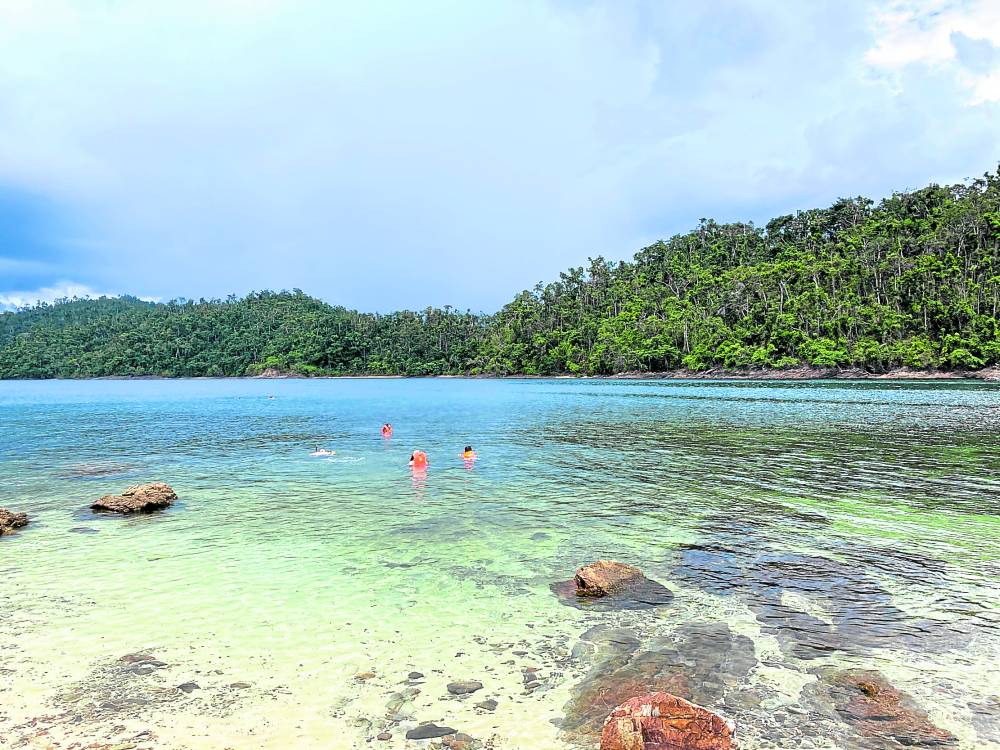
The world-renowned Underground River in Puerto Princesa, Palawan, remains the city’s most venerable attraction, being a United Nations Educational, Scientific and Cultural Organization (Unesco) World Heritage Site and a New 7 Wonders of the World.
As Philippine tourism gets rolling again, however, the city, specifically the 22,202-hectare Puerto Princesa Subterranean River National Park (PPSRNP) as well as its partner organizations, is suggesting some additions to the itinerary. These three community-based sustainable tourism (CBST) sites, for example, receive support from a Palawan stalwart, the Pilipinas Shell Foundation Inc. (PSFI), whose Turismo at Negosyo Dulot ng Ingat Kalikasan (Tandikan) project has been developing such sites in barangays within the park since 2015. We swung through them for a closer look.
Isla Filomena, New Panggangan
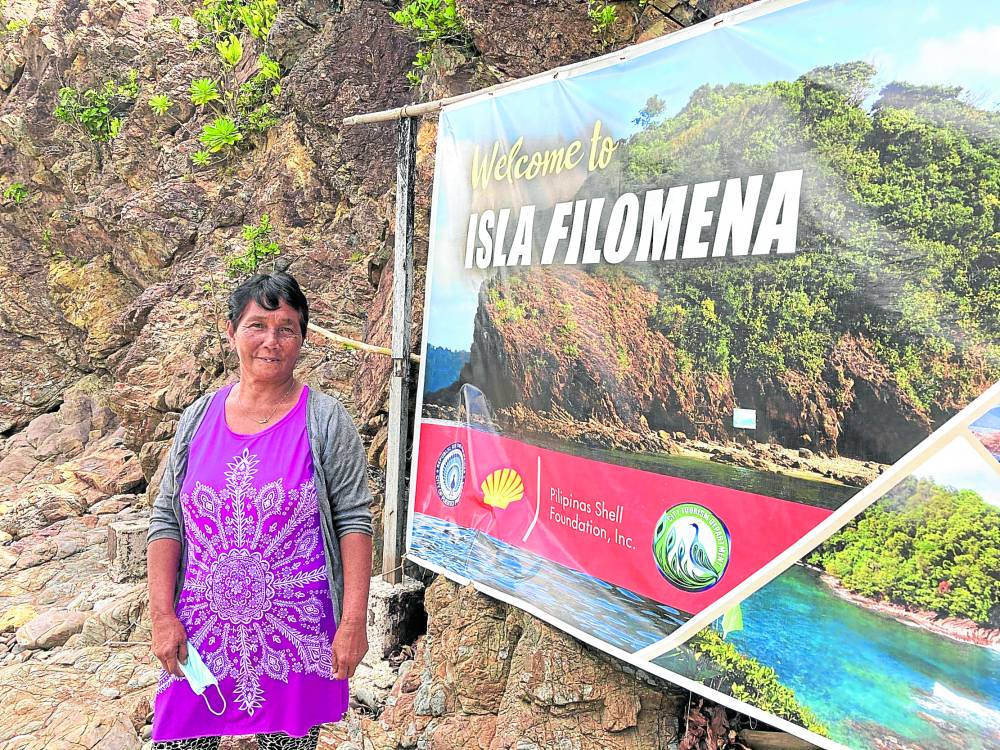
If you think Palawan has run out of isolated, tranquil islands, you’d be wrong. About 30 minutes by banca from the busy Sabang Wharf in Barangay Cabayugan is Isla Filomena in New Panggangan, a small uninhabited islet in the middle of a 1-ha sanctuary embraced by a cove, with clear water, corals and fish life. It’s the perfect getaway; there’s only a small rocky beach and no frills, but the quiet may be just your thing.
The site was formalized as a tourism destination when the local people’s organization (PO), Nagkaisang Samahan ng Isla Filomena Dive Site and Snorkeling sa New Panggangan, was established in 2016.
“The management of the park thought it would be easy for us, especially the women folk, to manage, as we can help guard the place and ask fishermen from other places with nets and compressors not to fish here,” says PO president Juanita Combinido in Filipino. “The barangay relies on this place, so we take care of our marine resources.”
There used to be a nice floating raft here out in the middle of the water, but Typhoon “Odette” blew that away, so the PO is in the process of rebuilding it. For P160 per head, you can frolic all day in privacy from 8 a.m. to 4 p.m., save for some locals standing by as lifeguards; PSFI and the City Tourism Office facilitated their training and certification in water search and rescue (Wasar), and they take their job seriously, swimming around snorkelers. Of a day’s income, half goes into the PO’s kitty and half goes to members on duty watching over the island for the day.
For an additional P200 per head and advance notice, the ladies will cook you a seafood lunch. We visited in the morning, but were still able to sample some of the products of the small bakery the PO established to tide the community over during the pandemic lockdowns: donuts, pancakes and breads, plus fresh coconut juice still in the shell.
For a respite from the water, climb about 10 minutes to the top of the island, for cool breezes and stunning views of the South China Sea and nearby Mount Bloomfield. (Contact Beth at tel. 0917-1571975; follow PPSRNP and World Heritage Site or Isla Filomena Dive Site on Facebook.)
Sabang mangrove tour

Mangroves are gravely underrated in this archipelago of ours, considering how important they are to our fishing industry.
“People don’t really understand their value,” agrees Celestino “Tinoy” Santander, president of the Sabang Mangrove Paddle Boat Tour Guide Association, speaking in Filipino. “They should put that in the elementary books. Fishing is our main resource, and this is the fish nursery. Mother fish come here to lay eggs. So if you catch a fish here which hasn’t laid her eggs, when you open her and find the bihod (fish eggs), that’s about 4,000 fish. What a waste. Otherwise, even your children and grandchildren could benefit. That’s why there’s no fishing here.”
The association has been in existence since 2000 but was formalized in 2008 by its first president, Aida Muyano, also known as “Lady Mangrove” for her advocacy. Santander succeeded her, and now organizes the 18 members who take visitors on tours of this 1.2-kilometer stretch of the Sabang River that is just a small part of the 47.55-ha mangrove area.
Santander is well-informed, and wearing a hat he wove from coconut tree leaves, this transplanted Bicolano talks to us about the brackish water that is brown from decomposing leaves (which feed the baby fish), the true mangroves and mangrove-associated trees like the talisay, and how 48,000 ha of the Philippines’ remaining 120,000 ha of mangroves are in Palawan.
“Maybe that’s why most of the country’s fish comes from here.” The entire province was actually declared a mangrove swamp reserve in 1981, by the way.
I personally love the smell, sights and sounds of mangroves, and knowing how those gnarly roots house growing fish makes them even more fascinating. During the quiet 45-minute ride, Mang Tinoy points out a century-old stand of mangrove trees, as well as a gorgeous sleeping mangrove snake, curled up on a branch. Sometimes you see monkeys, lizards, and flying squirrels, as well. All kinds of birds fly by, including a brilliant Palawan bluejay, and their calls, along with the chirping of cicadas and the slushing of the water against the boat paddle, make for a true symphony of nature.
Many trees were felled by “Odette,” Mang Tinoy says, and we see a number of them along the way, but the association is now in the process of clearing the area. PSFI also helped them establish a nursery for mangrove propagules, and trained some community members in farming as additional livelihood. (Text Celestino Santander at tel. 0935-6893919; follow Sabang Mangrove Paddle Boat Tour Guide Association on Facebook.)
Hundred Caves, Tagabenit
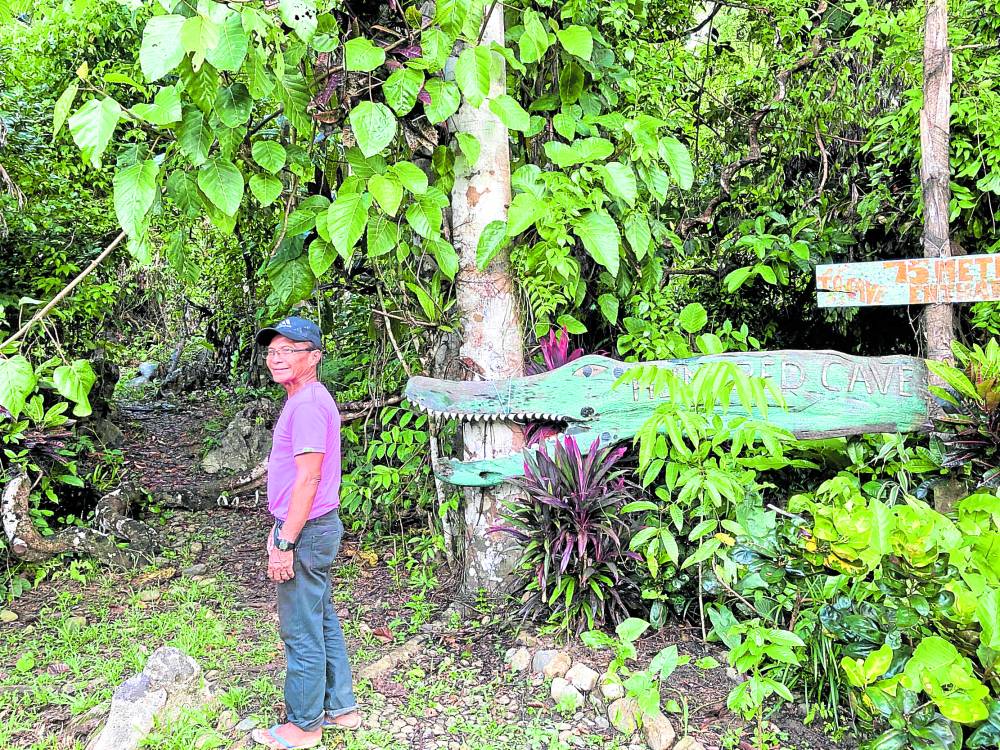
Is it really a hundred caves? “It could be more, or a little less,” says cave escort Art Hermoso in Filipino, with a laugh. “But you have all these interconnected passages, including small chambers where the balinsasayaw (swiftlets) have their nests. So that was the name that was registered with the Palawan Council for Sustainable Development (PCSD) in 2008, and since then it has been forbidden to harvest the birds’ nests.”
From the distance, you can’t quite tell what treasures are waiting in this quiet barangay; you do see the large rock rising in the distance.
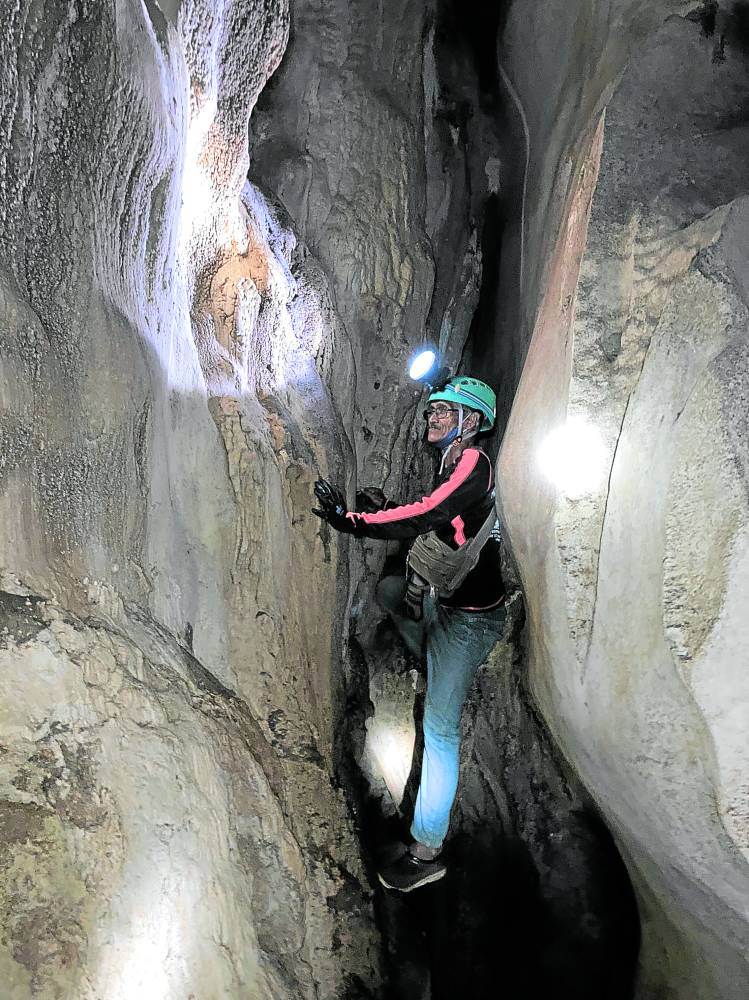
“We never really knew what was in there until it was surveyed by the PCSD and approved as a tourism destination,” recounts Mario Claud, president of the Tagabenit Neighborhood Tourism Association (Hundred Caves), in Filipino. As the story goes, a native Palau’an birds’ nest gatherer followed one swiftlet inside and discovered the caves. The place was eventually set up with ladders and footpaths, and started operations in 2014.
Claud divides income from the entrance fee (P450 for the regular tour, some 350 m and an hour into the cave, or P1,000 for a special, more challenging tour that goes for a kilometer) between the association’s kitty (40 percent) and members who show up to work or help maintain the reception area.
Claud thanks PSFI for flying in members of the Visayas Caving Association to train members in cave safety rescue. That’s because safety is a requirement for assistance, says PSFI executive director Marvi Rebueno-Trudeau. “
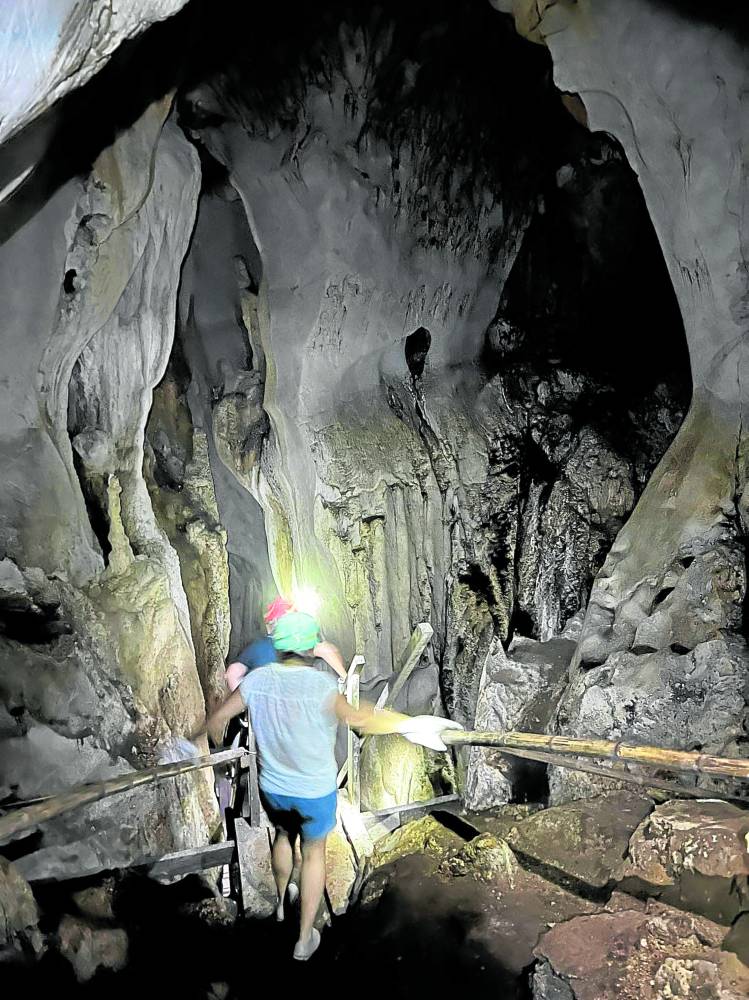
We have to check if the place is compliant to the law, and yes, we have a National Cave Law. So we sat down with the community and with PCSD. Caving is very risky, so we needed to upscale their skills on spelunking and give them equipment.”
Incidentally, when COVID-19 closed down the caves, as well as all other tourism in Palawan, the association was a case study on how to use your savings to sustain you. Using P40,000 in earnings and a P230,000 grant from the Department of Social Welfare and Development’s Sustainable Livelihood Program, Claud and company put up a small grocery store on the highway that supplied several communities’ daily food needs, which earned them some P30,000 a day. They even managed to distribute an extra P1,500 for each member last Christmas.
As for the caves themselves, it’s definitely a fantastic, highly recommended experience, although you have to be in decent enough shape to handle some climbing and scrambling. The guides hand out cotton gloves and rubber-soled shoes, but I suggest you come with your own climbing shoes and thick gloves; you’ll need them. We also got helmets with lights, and a wealth of information from the erudite and engaging Hermoso, who talked about the cave’s store of calcium, which appears like glittering droplets on the wall; the eight families of bats that live there; and the many gorgeous stalactites and stalagmites.
Touching walls with “live” calcium is discouraged—reverence and respect for nature are basic, anyway—but you will need to get on your hands and knees sometimes, so expect to get muddy despite steps, stairs, and ladders. The inside of the cave is dark and moist, and it’s unfathomable how long it took for those droplets of calcium-rich water to solidify into solid shapes. It was a great experience seeing age-old forms, nature’s own sculptures, and lots of life; there were even small holes where baby bats and nests of resident swiftlets could be found, complete with eggs! (Follow Hundred Caves on Facebook page.)
Subscribe to our daily newsletter
By providing an email address. I agree to the Terms of Use and acknowledge that I have read the Privacy Policy .
MOST VIEWED STORIES
- LIFESTYLE.INQ Fashion , LIFESTYLE.INQ Latest
Rustan’s summer, a state of mind: Check out this season’s must-haves that you can find under one roof
- BY The Lifestyle.INQ Staff
- May 10, 2024
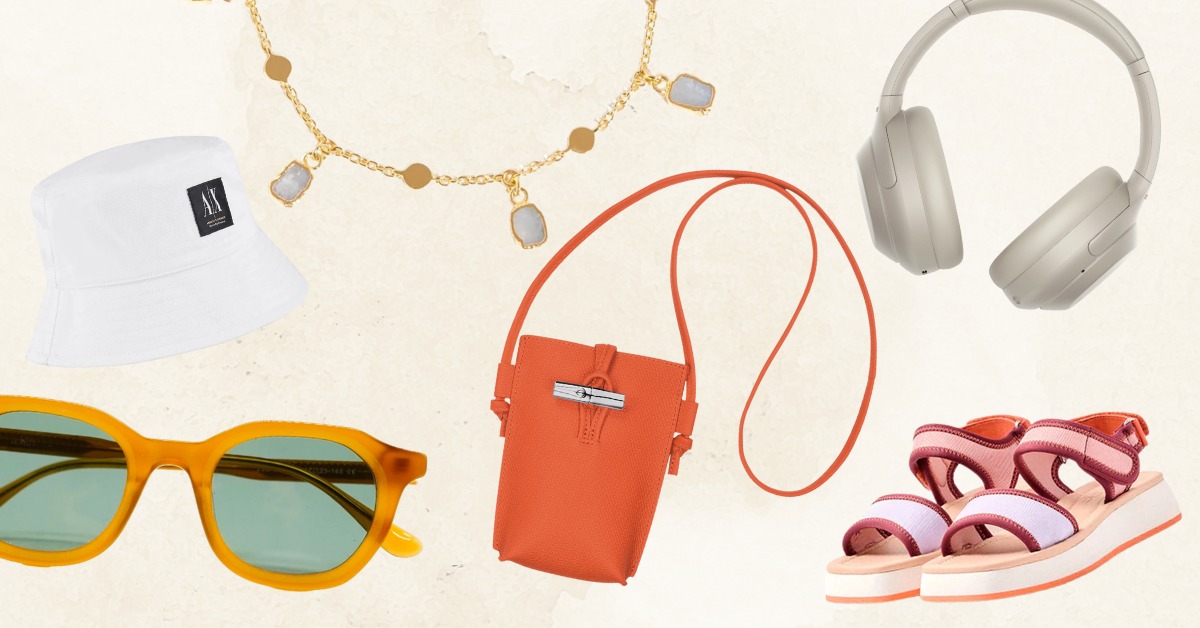
- LIFESTYLE.INQ Design , LIFESTYLE.INQ Latest
Filipino-Belgian artisan Racso Jugarap emerges as finalist for Loewe Craft Prize

- LIFESTYLE.INQ Fashion , LIFESTYLE.INQ Latest , LIFESTYLE.INQ Ria Recommends
Scent-sory pleasures: 5 fragrances to turn heads
- BY Ria Prieto
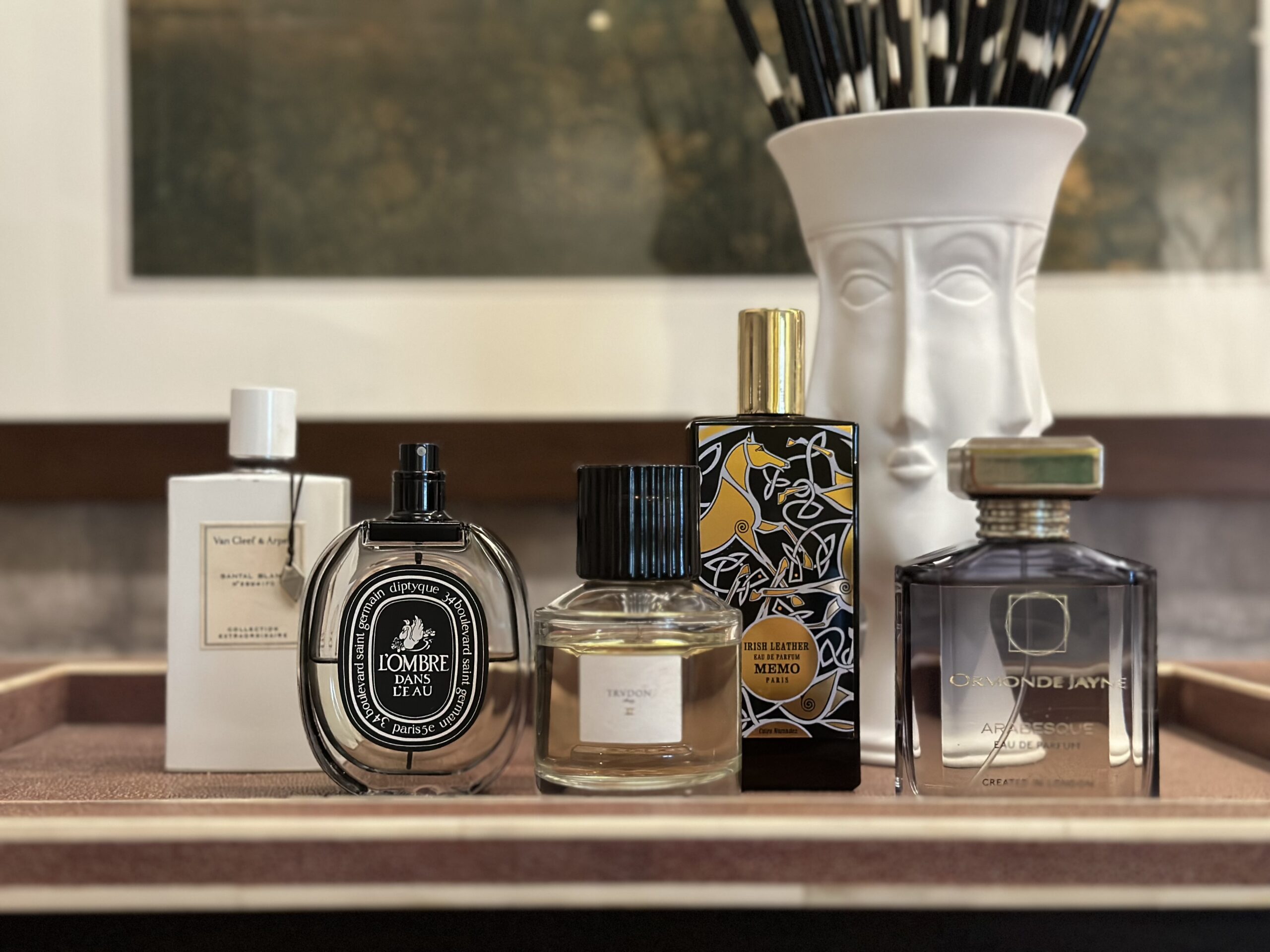
With love, for mom: The Mother’s Day guide to timeless gift-giving
- BY Jan Alyanna G. Tamaray

TOP STORIES

MORE FROM LIFESTYLE.INQ

FROM THE NICHE TITLES

CURRENT. DYNAMIC. INSIDER.
The latest in global fashion, beauty, and culture through a contemporary Filipino perspective.
CONNECT WITH US
- instagram.com/lifestyle.inq
- facebook.com/lifestyle.inq
- youtube.com/lifestyle.inq
- [email protected]
Stay in touch and get the latest stories from the LIFESTYLE.INQ newsletter

- ENTERTAINMENT
- HUMAN INTEREST

COPYRIGHT © LIFESTYLE INQUIRER 2022
- Share full article

Watery, Peaceful, Wild: The Call of the Mangroves
On Curaçao, visitors can explore the trees’ habitat, where colorful birds roost on tangled branches and trunks, and small paths through the greenery beckon.
The Curaçao Rif Mangrove Park offers guided tours, elevated boardwalks, programs for local schoolchildren and a tiered entrance-fee system for residents and overseas visitors. Credit... Frank Meyer for The New York Times
Supported by

By Elisabeth Goodridge
Elisabeth Goodridge is the deputy editor for travel at The New York Times.
- May 8, 2024
It was a sunny afternoon in February at the height of the high season on the Caribbean island of Curaçao, but my partner, Aaren, and I were far from lounging on a white-sand beach, snorkeling over a coral reef or strolling among the Easter-egg-colored buildings of Willemstad, Curaçao’s capital and a UNESCO World Heritage site — typical activities for travelers to this former Dutch colony.
Instead, on a kayak tour with Serlon St Jago, a guide from the Curaçao Rif Mangrove Park , we were learning about the country’s mangrove restoration, and the vital role mangrove habitats play in coastal resilience, protection for marine and bird species, and fighting the effects of climate change.

No poisonous snakes, alligators or large predators live on Curaçao, Mr. St Jago said, reassuring information as we paddled toward a forbidding wall of mangroves lining Piscadera Bay. Up close, the trees were magnificent and cheerful. Colorful birds roosted on tangled branches and trunks, and small paths under the green and occasionally yellow leaves beckoned us to explore. With our kayaks beached, Mr. St Jago pointed out fiddler crabs and mussels, and described differences of the local mangrove species — the red, white and black — and how they adapted to live and propagate where water meets land.
“There’s so much life here,” he said with infectious enthusiasm.
We were the only tourists on the water, but getting more visitors like us interested in mangroves, perhaps even persuading them to replant some of the vital trees themselves, has been a priority of scientists, activists, park rangers and tourism operators on Curaçao in recent years.
The island isn’t alone in its efforts: Similar mangrove-focused work has started around the world, in places like Indonesia , Australia , Belize and Florida , as fragile destinations balance tourism’s growth with the conservation — and restoration — of the natural resources that captivate visitors.
“Coral reefs get all the attention. But mangroves are probably a lot more important,” said Gabby Ahmadia , a vice president with the oceans program at the World Wildlife Fund who oversees the organization’s mangrove science and restoration programs. “My favorite analogy about mangroves is that they are Swiss Army knives, because they do provide so many different benefits and they can do so many different things.”
Though these forests are one degree of separation from the sights and the activities that traditionally draw visitors to the ocean, changing perceptions might be hard. To protect the environment, mangrove kayak tours can be — as are most snorkel, fishing and bird-watching tours offered in other destinations — limited by number, and visitors must be interested in the first place. With their summer reads and beach toys, family traditions and limited vacation days, most tourists might simply agree with the old saying “Life is better at the beach.”
A foundation of life
The twisty branches, trunks and distinctive aboveground roots of mangroves are a stark, complex repudiation of how a child’s drawing portrays a common tree. The roots can arch up, pop up spikelike from the water or form stilts above and under the surface. Adapted to oxygen-poor soil, high salinity and the ebb and flow of an intertidal zone, coastal mangroves thrive where other trees and shrubs would perish. Unless they are yellow, the leaves are green, and some, if you lick them, taste salty.
Mangrove forests can appear impenetrable, muddy, smelly and swampy. For centuries, they have been cleared for firewood, farmland, urban development, aquaculture and, yes, tourism. On Curaçao, mangroves are now found on only 0.012 percent of the island. Globally, more than half of the mangrove forests have been cut down or otherwise destroyed in the past 50 years. Deforestation has slowed — but not stopped — in recent years, and rising sea levels and increased storm activity have done further damage.
But coastal mangroves — there are some 60 species worldwide — are the foundation of life above and below the water. With intricate root systems, they act as nurseries for juvenile fish and other marine life. Mangrove branches and trunks make safe feeding and nesting sites for yellow warblers , tricolored herons and other bird species, reptiles like iguanas, and insects aplenty.
Those strongly anchored roots also protect from flooding, erosion and tidal surges by slowing down seawater and trapping dirt and debris. More crucially, mangrove forests are extraordinary for decreasing the effects of global warming, by absorbing and storing carbon annually at a rate 10 times as great as tropical rainforests. Mangroves, along with other coastal wetlands, “sequester enough carbon each year to offset the burning of over one billion barrels of oil,” according to the Nature Conservancy .
Surreptitious beginnings
Ryan de Jongh, a 53-year-old Curaçao native, activist and tour guide, is the living embodiment of regenerative tourism. He’s an important reason we encountered a lush, thriving ecosystem in Piscadera Bay, and demonstrates how one person can make a difference.
Mr. de Jongh grew up swimming in the bay and watched the area’s mangroves being cleared for fuel and construction. In 2006, he surreptitiously planted the first mangrove tree — a single seedling can mature in around 15 years and lead to an entire thicket — and now, he said, more than 100,000 trees are growing. He made similarly stealthy plantings at other inlets and bays, making himself a local hero in the process.
Mr. de Jongh, who gives kayak tours himself , now works on widespread government-sanctioned restoration projects.
His aim is to eventually plant 1.3 million trees on the island. “I have to transform literally a desert back to green,” he said.
The interior of Curaçao certainly looks like a desert, with a dry, dusty landscape of cactus and other succulents. Along with its closest island neighbors, Aruba and Bonaire, Curaçao is outside the Caribbean’s hurricane belt and receives minimal rainfall. People on the island drink desalinated seawater.
The trade winds bring cooler temperatures. In the 16th century, they also brought Europeans who enslaved and deported the Indigenous population and turned Curaçao into a slaving port. The colonists also planted oranges, sugar cane and other nonnative species, with varying degrees of success, and developed giant salt pans for export, but it was the construction of an oil refinery in 1918 and growing tourism that finally brought widespread jobs. The refinery shut down in 2019 — nine years after Curaçao voted to become a semiautonomous nation from the Netherlands — an event that only emphasized tourism’s importance for Curaçao’s economy. Last year, the island, only 40 miles long, welcomed 1.3 million visitors .
Aaren and I gladly did our part to support the economy: In Willemstad, that meant eating at Plasa Bieu , the Old Market, where individual vendors cook and sell local cuisine. We fought with each other over the fried wahoo and an arepa di pampuna — pumpkin pancake — but we were warned off the cactus soup. “I live here,” said another diner, “and I don’t even eat that.” We also snapped photos, like so many other visitors, while crossing the floating Queen Emma Bridge , and watched it open and close for marine traffic.
We waited in an hourlong, locals-heavy line at De Visserij Piscadera Seafood restaurant (“slaying and filleting” since 2017), where diners choose and purchase their fish fillets before sitting down; we drank oregano punch for the first time (think mint ice tea, but oregano and oh so refreshingly delicious); and we inhaled grilled shrimp and raw fresh tuna.
Further north, we ate “williburgers” — goat burgers — at Marfa’s GoodHangout in Sint Willibrordus, which overlooks an old salt pan that, sadly, the resident flamingoes absented that day, and delighted upon coming across a coral nursery while scuba diving right off the jam-packed Kokomo Beach.
Coral reefs are crucial to Curaçao’s tourism and fishing industries and valued at more than $445 million annually, according to a 2016 economic assessment published by the nonprofit Waitt Institute. And coral reefs, which support roughly 25 percent of all marine life, are enduring cataclysmic bleaching and disease brought on or compounded by climate change.
In the last 10 years, scientists have better understood the symbiosis between coral reefs and mangroves: They don’t need each other to exist, but proximity brings benefits to both ecosystems.
“Working in this field of conservation, you might come in from one entry point and then you realize everything is connected,” said Dr. Ahmadia of the W.W.F. “We can work on coral reefs, but we should be thinking about sea grass beds and mangroves, because they are all really connected. And then of course, they are connected to the human environment.”
One morning, Aaren and I walked through the 30-acre Curaçao Rif Mangrove Park , a short stroll from the center of Willemstad and a shorter one from the island’s cruise ship terminal. Open since 2022, the park offers guided and audio tours, elevated boardwalks, programs for local schoolchildren and a tiered entrance-fee system (guilders and U.S. dollars accepted) for residents and overseas visitors. Some 17,766 people came in 2023, an increase of 14,687 from 2022.
Manfred van Veghel is the new director of the Caribbean Research and Management of Biodiversity Foundation, which oversees the mangrove park and five other national parks. Working with the government of Curaçao, local travel operators and activists like Mr. de Jongh, Dr. van Veghel aims to expand park access, construct an elevated bridge and add a visitor center, among other goals. The efforts are part of his desire to transform Curaçao into more of a nature-based tourist destination.
“We had a record last year and they are pushing to get more,” Dr. van Veghel said of Curaçao’s number of annual visitors. Yet, he said, the beaches are getting full. “So we need to get activities other than going to the beach — and the mangrove park is an excellent activity.”
Mark Spalding is a senior marine scientist with the Nature Conservancy and lead scientist of the Mapping Ocean Wealth initiative , an online tool that applies economic value to coastal ecosystems.
Dr. Spalding said a draw of mangrove activities, like boating and hiking, is that “without having to trek through the Amazon for hours and hours, you can get that sense of wilderness and experience, and also the peace and tranquillity very quickly and very easily.”
“It might only be two hours of your entire holiday,” he said, “but it’s the thing you take home with you — the story you tell.”
Follow New York Times Travel on Instagram and sign up for our weekly Travel Dispatch newsletter to get expert tips on traveling smarter and inspiration for your next vacation. Dreaming up a future getaway or just armchair traveling? Check out our 52 Places to Go in 2024 .
An earlier version of this story misidentified an nongovernmental organization. It is the World Wildlife Fund, not World Wildlife Federation.
How we handle corrections
Elisabeth is the deputy editor for the Travel Desk at The New York Times. More about Elisabeth Goodridge
Open Up Your World
Considering a trip, or just some armchair traveling here are some ideas..
52 Places: Why do we travel? For food, culture, adventure, natural beauty? Our 2024 list has all those elements, and more .
Mumbai: Spend 36 hours in this fast-changing Indian city by exploring ancient caves, catching a concert in a former textile mill and feasting on mangoes.
Kyoto: The Japanese city’s dry gardens offer spots for quiet contemplation in an increasingly overtouristed destination.
Iceland: The country markets itself as a destination to see the northern lights. But they can be elusive, as one writer recently found .
Texas: Canoeing the Rio Grande near Big Bend National Park can be magical. But as the river dries, it’s getting harder to find where a boat will actually float .
Advertisement

IMAGES
COMMENTS
During our mangrove tour in Sabang, we also spotted some resident monkeys playing above the mangrove trees. Sabang Mangrove Forest is also a birding spot, it is reportedly home to some endangered birds such as the Palawan peacock pheasant (Polyplectron emphanum), the stork-billed Kingfisher ( Halcyon capensis ), and the white-collared ...
Jan 2020. When visiting here, two guides are taking you on a peaceful paddle tour in the mangroves. One of the is paddling and the other is explaining why the mangroves are important for Palawan and the rest of the world. The ride takes about 30 minutes and it was an interesting and relaxing time spent here.
Explore a really fun nature adventure at Mangrove Paddle Boat Tour. Take a quiet and relaxing boat ride through the mangrove forests in Puerto Princesa. Learn more about the mangrove eco-system from your guide and find out how the locals use the plants in their daily lives. See more.
The Mangrove Paddle Boat Tour is usually conducted in the Sabang area of Palawan, known for its rich mangrove forests and diverse wildlife. How long does the Mangrove Paddle Boat Tour typically last? The duration of the Mangrove Paddle Boat Tour can vary, but it typically lasts around 1 to 1.5 hours, allowing visitors to immerse themselves in ...
Palawan, Philippines. Underground River Day Trip from Puerto Princesa City. 179. from $45.00. Price varies by group size. Palawan, Philippines. Private El Nido Tour C Island Hopping. 2. from $953.53.
The Mangrove Forest in Palawan isn't just a mere cluster of trees near the coastline—it's a cradle of life where the land meets the sea. Spanning across various parts of the island, including but not limited to the protected areas in Puerto Princesa and the tranquil Sabang, this network of mangroves serves as a vital ecosystem teeming with ...
Palawan Tour. May 2019 • Family. The Mangrove Tour was worth it at 300 pesos. It is a guided tour with explanations about the ecosystem of the mangrove. Got to see some monkeys and a snake. Read more. Written May 23, 2019. This review is the subjective opinion of a Tripadvisor member and not of Tripadvisor LLC. Tripadvisor performs checks on ...
Tick off two of Palawan's natural wonders in just one day during a Puerto Princesa Underground River and mangrove tour. The ideal choice for nature lovers and visitors with limited time in Palawan, this tour transports you between the far-flung attractions with ease and places an emphasis on sustainability with eco-friendly boats.
Sabang, Cabayugan, Puerto Princesa, Palawan - Nestled on the picturesque island of Palawan, renowned for its stunning natural beauty, the Mangrove Paddle Boat Tour has emerged as a shining example of community-based sustainable tourism. Located in the enchanting village of Sabang, near the Underground River, this unique attraction allows visitors to immerse themselves in the…
Found in Barangay Sabang in Puerto Princesa City, Palawan are a swamp forest and a mangrove forest that offers a side trip (from the Puerto Princesa Underground River Tour) that shouldn't be missed, the Sabang Mangrove Paddleboat Tour where visitors can go on a less than an hour tour around the mangrove forest, see hundreds of mangroves and learn about the flora and fauna that thrive in the ...
Discover and book 3-in-1 Adventure: Underground River, Zipline ride, and Mangrove Forest Tour on Tripadvisor. Help. If you have questions about this tour or need help making your booking, we'd be happy to help. Just call the number below and reference the product code: 27887P67. +1 855 275 5071.
Jan 2020. When visiting here, two guides are taking you on a peaceful paddle tour in the mangroves. One of the is paddling and the other is explaining why the mangroves are important for Palawan and the rest of the world. The ride takes about 30 minutes and it was an interesting and relaxing time spent here.
per adult (price varies by group size) El Nido Tour D Full Day w/ Beach Lunch. 2. Full-day Tours. from. ₱1,627.90. per adult (price varies by group size) Mystic Mangrove Adventure. Booking unavailable on Tripadvisor.
When visiting here, two guides are taking you on a peaceful paddle tour in the mangroves. One of the is paddling and the other is explaining why the mangroves are important for Palawan and the rest of the world. The ride takes about 30 minutes and it was an interesting and…. Read more. Date of experience: January 2020.
we highly recommended the tours, the tour guide is very accommodating, Sir Jhay R salute for your service. the van pickup was earlier so we had a smooth travel from Salvacion junction to Sabang wharf with a stopover along the way with the overlooking view and an elephant cave. must see the wonders of underground river and took an adventure at Sabang zipline, the last trail is the Mangrove, our ...
After our Underground River tour, we have some more time ready to be spent here in Sitio Sabang. So, we started to look for the way going to Mangrove Paddle Boat Tour.. This post is a part of Puerto Princesa, Palawan: A Walk-through to the City of Living God article. Go back to the main article to see more of Puerto Princesa.
Immerse yourself in the wonders of Dewil Mangrove Tour in El Nido, Palawan. Paddle through lush mangrove forests, witness captivating biodiversity, and support sustainable tourism. Discover the beauty of this community-managed eco-tour, leaving a positive impact on the environment and local livelihoods.
The Mangrove Boat Ride is a short ride that features the mangrove trees of the subterranean park, you'll get to see limestone rocks, the ecosystem of termites, and monkeys on the trees. We were lucky to see a mother monkey with her infant while on our way back from the Paddleboat tour. You can also get to see rare species of birds but it ...
Port Barton Tour A In San Vicente, Palawan . Full-day Tours. from ₱2,654.64. per adult. The area. Full view. Best nearby. Restaurants. 1 within 5 kms. DOSE Specialty Coffee. 0 m Cafe. See all. ... The mangrove river tour was a relaxing tour, paddle boats take you deep into the mangrove swamp forest. A guide will look out for snakes for you ...
July 03, 2022. 2192. Screenshot from Turismo Dadi. The Sitio Sabang, Barangay Cabayugan paddle boat tour adventure is being offered by the City Tourism Department (CTD) to residents and visitors from around the world who have not yet visited the site, which is known for its old-growth mangrove forest and bird-watching opportunities.
After our SabangX Zipline, we were next slated to do the Mangrove Paddle Boat Tour, another activity offered and sponsored by Sheridan Resort & Spa. ... Palawan Sales Office: Jeco Bldg., Rizal Ave. Extn., Puerto Princesa City. Tel (+63 48) 434 1448 to 49 and 723 7278. Mobile Numbers (+63 917) 308-3245 and (+ 63 917) 308-3245. Cebu Sales Office ...
GLITTERING FIREFLIES NIGHT TOUR. Escape the busy life of Coron with your night trip to the largest mangrove forest in Coron Town. Enjoy the romantic boat ride along the mangrove swamps to catch the colonies of fireflies producing magnificent twinkling lights. Spend time on the water experiencing nature's magic - the supernatural glow of ...
Santander succeeded her, and now organizes the 18 members who take visitors on tours of this 1.2-kilometer stretch of the Sabang River that is just a small part of the 47.55-ha mangrove area.
TikTok video from 369mairis (@369mairis): "Discover the stunning mangroves of Puerto Princesa on a mesmerizing tour. Immerse yourself in the natural beauty of Palawan, Philippines, and uncover the wonders of this tropical paradise. #puertoprincesa #mangrove #travel #philippines #palawan #palawanphilippines".
Instead, on a kayak tour with Serlon St Jago, a guide from the Curaçao Rif Mangrove Park, we were learning about the country's mangrove restoration, and the vital role mangrove habitats play in ...